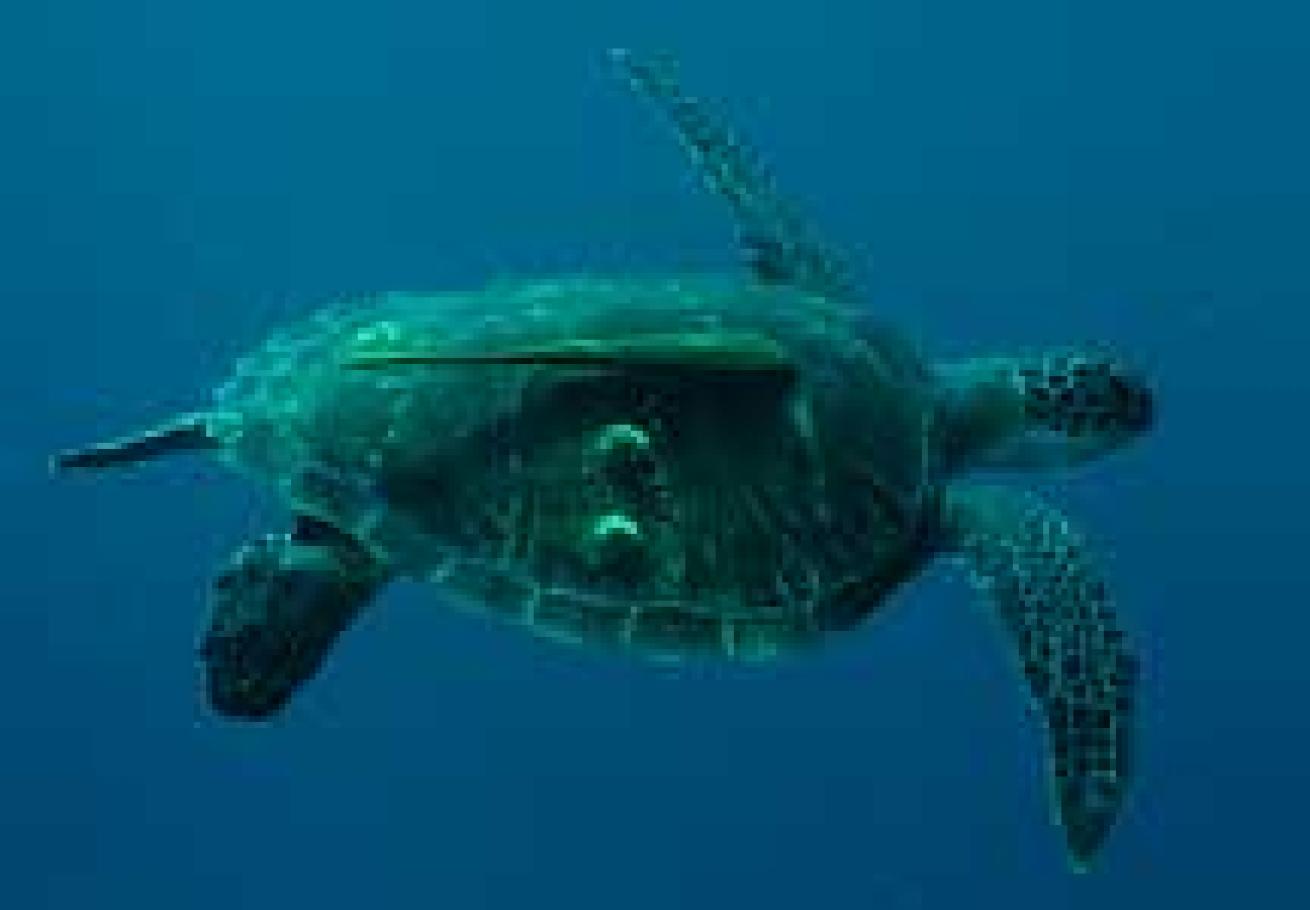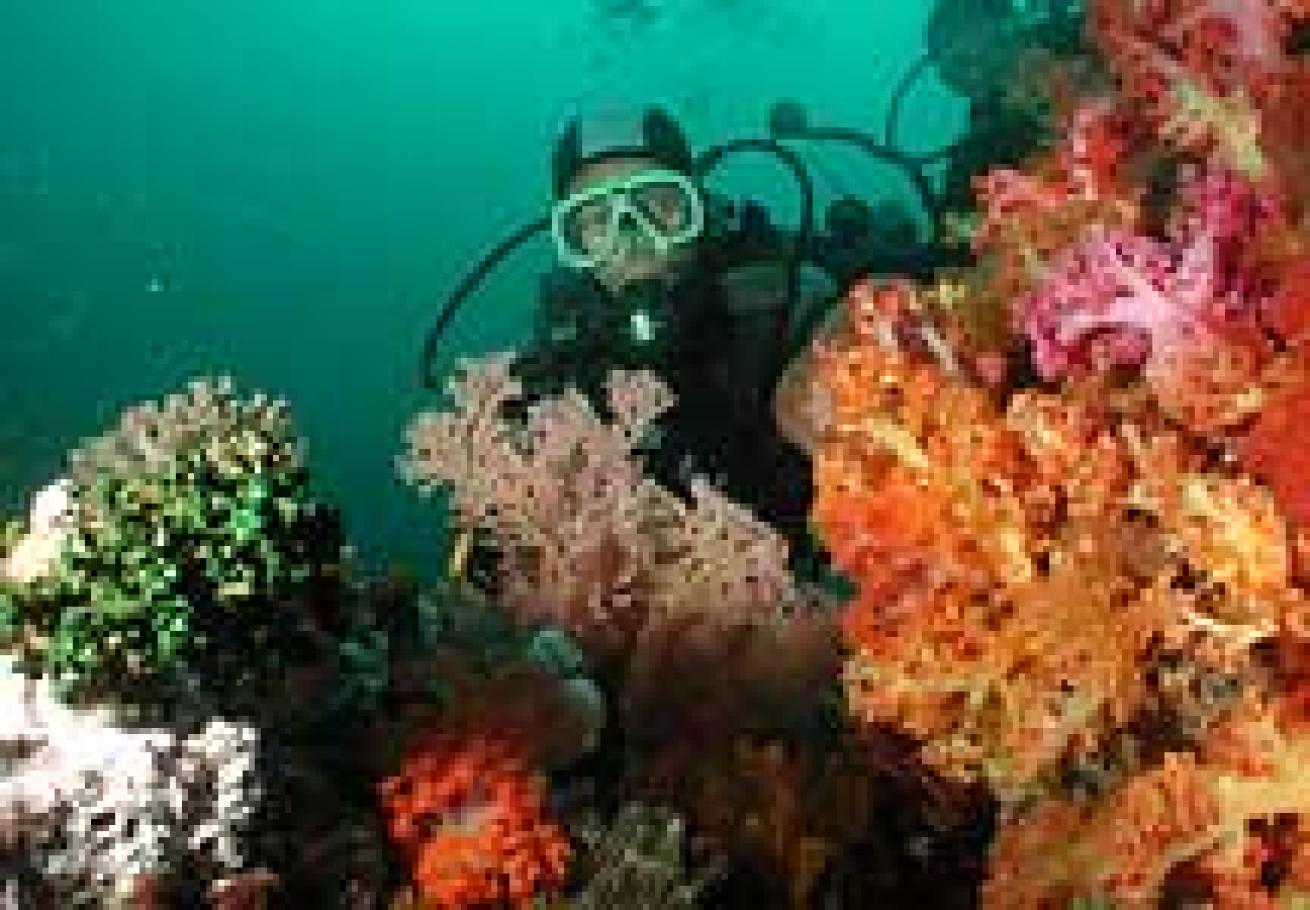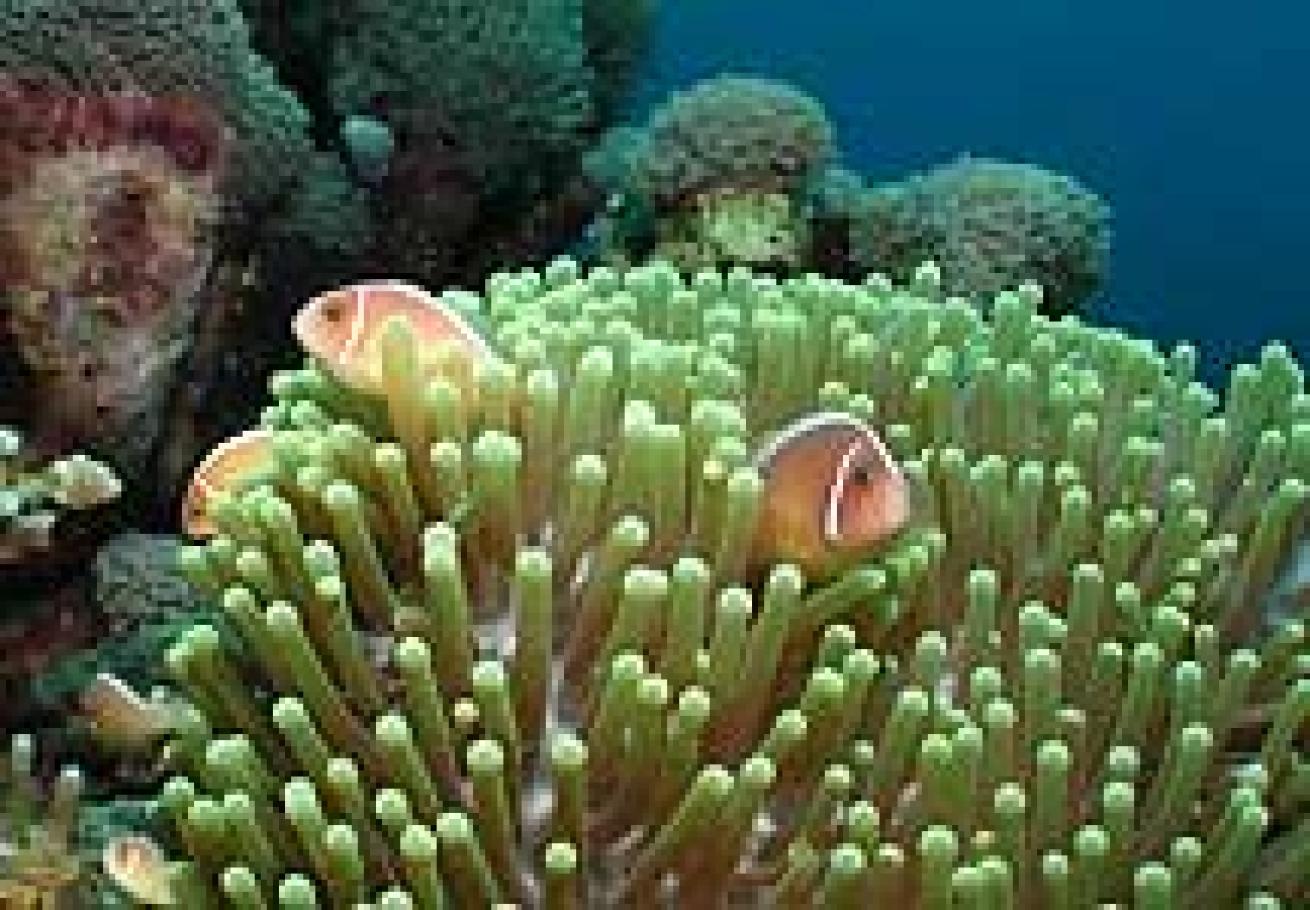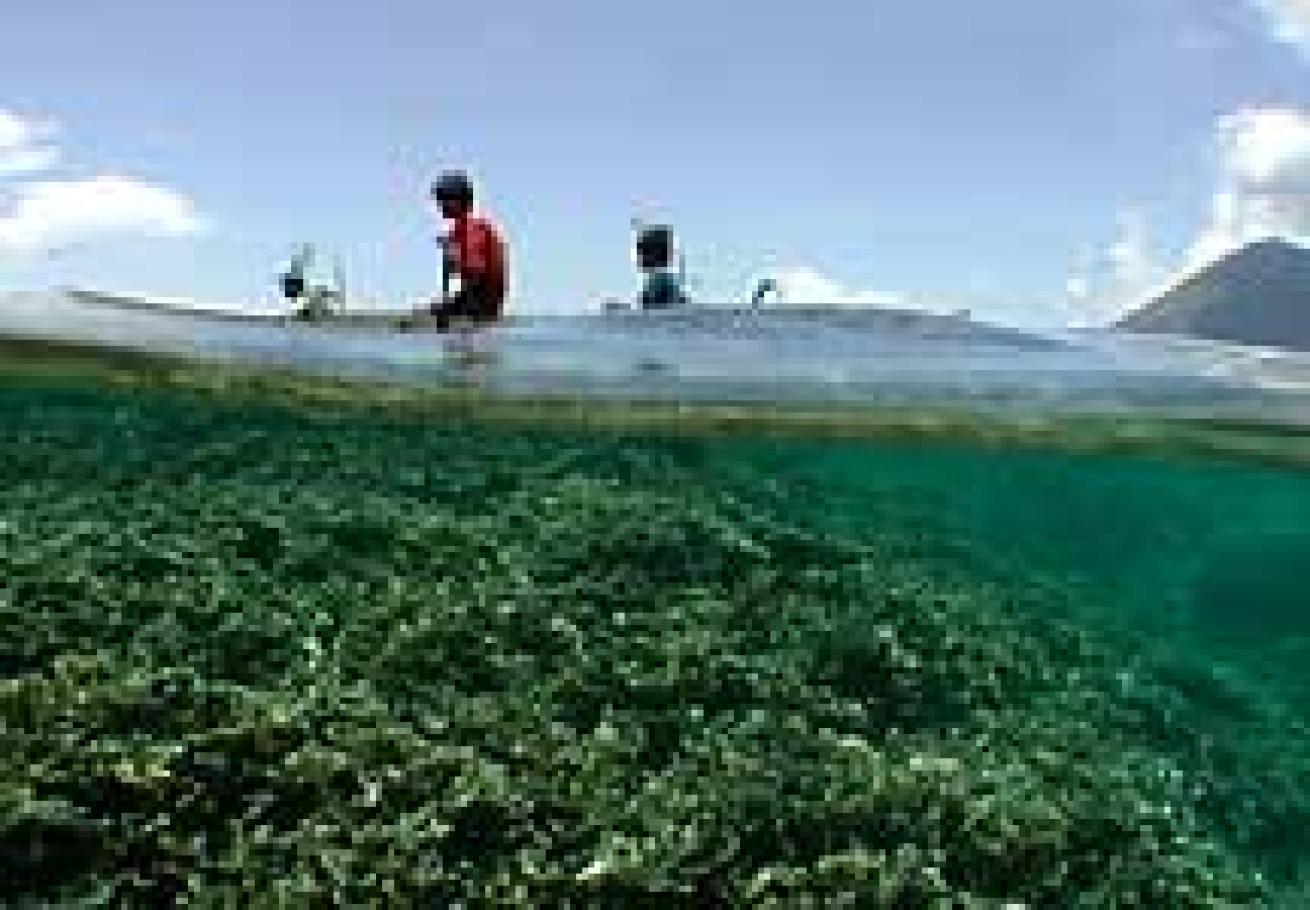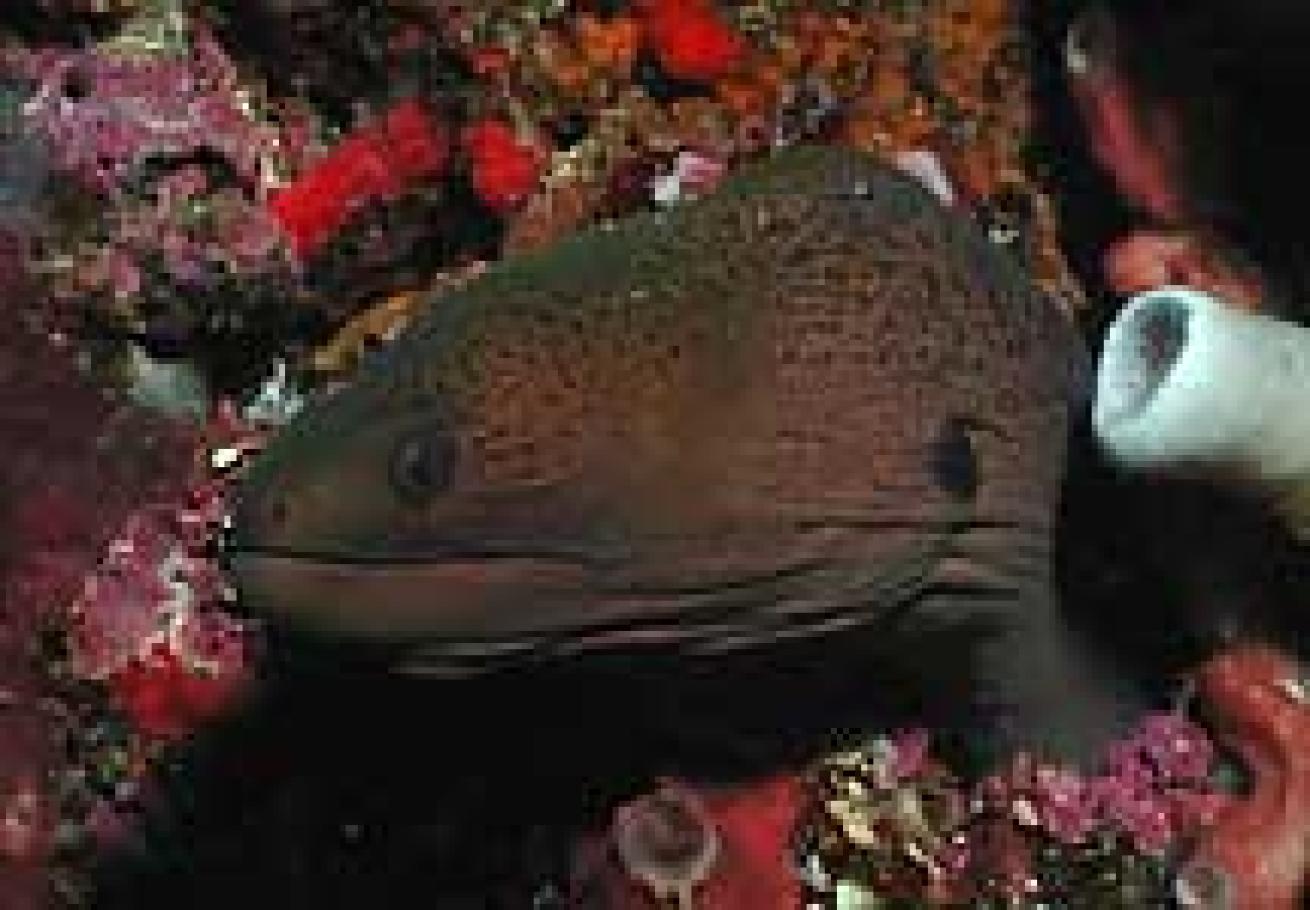2001 Digital Shootout - Indonesia

This trip for me began several months ago when Berkley White of Backscatter called to see whether I would be interested in coming to Indonesia to give a few lectures for the first annual Light and Motion Digital Shootout. Now, as little as I know about digital now, I knew even less then. So, it was maybe a little pretentious for me to agree to be a staff expert, but I figured photography is photography--I can learn before it is time to go. Like all great procrastinators, I didn't learn nearly enough to achieve "expert" status, but I did learn enough to appreciate the obvious advantages to digital imaging, and gained enough experience to realize this technology will inevitably be a part of any pro shooters arsenal in the very near future. So, with the expectation of shortening my personal learning curve, I packed my Olympus 3040 and Light and Motion Tetra housing and headed off to Manado, Indonesia on Sept. 10, 2001.
This is a long trip--5 hours from Miami to San Francisco, 15 hours to Korea, another 6 to Singapore, and then the final leg, 3 hours to Manado. Plenty of jet lag is assured, but we all rationalize that likewise great photo opportunities in Indonesia are assured once we get there. This photography potential, plus the opportunity to learn more about underwater digital imaging and post-production file management, is the motivation for 34 digital photo enthusiasts to trek to the other side of the world for the Digital Shootout.

Once we hit Singapore we are surprised to find a local television reporter and cameraman wanting to interview us as we leave the airplane. They are seeking impressions from Americans regarding the World Trade Center terrorist attack, but this is the first we'd heard of it. The mood of the trip quickly goes from a combination of anticipation and fatigue to incredulity and depression. Yet, we're on the road, we can't fly home if we wanted to, so we power on to our host hotel, the Hotel Santika Manado.
Geography 101--The Santika Manado is located pretty much in the center of the coastal region of the Bunaken National Park in the province of North Sulawesi, Indonesia. There is a northern section with 5 islands, and a central and southern section comprised of coastal reefs. The Park is quite large, 80,000 hectares, and diverse. There is an inactive volcano (Manado Tua), as well as other islands presumably of volcanic origin. Depths range from coral reefs nearly to the surface to a maximum depth of 2,000 meters. Water temperature is between 27 and 29 degrees Celsius year-round and waves rarely exceed 1 meter high. However, the tidal shift is 2.6 meters, so current is inevitable. Most dives are done as drift dives. There are 58 different coral species and 2,000 species of fish found within the Park.
This first afternoon at the resort is reserved for briefings from the hotel staff and the dive operation, Thalassa Diving Center. We receive our tokens for entrance to the Bunaken National Marine Park, and try to remain alert for the formalities. Gratefully, everyone is sensitive to our narcolepsy, and this long day of travel mercifully ends early.
Day 1
We awake to a beautifully sunny day and have an opportunity to appreciate the lush grounds of Hotel Sintaka Manado. The meals are buffet style, so no valuable dive time is lost waiting for food service. By 8:00 we are all assembled at the dive dock, with cameras and dive gear prepped and ready for our first dives.

The Dives--The waters are slick calm this day, but because it is our first day we decide not to venture too far from the resort. We take a 15-minute boat ride along the coast of North Sulawesi to DJ Point for our first dive. The water was very warm, 84 degrees, and since many of the Shootout guests are from Northern California and Colorado, the warm water is a very welcome change from what they had been used to. Visibility was about 60 feet, but our bright sunshine soon changed to gloomy overcast. No surprise that rain is part of the meteorological expectation simply by looking at the verdant hillsides. 3,000mm annual precipitation is expected, and we get our share today.
I'm set up for wide angle, so it makes my quest a bit more challenging, but many of the shooters are rigged for macro, and the low ambient light affects them not at all. The guides are extraordinary critter finders, mostly small creatures appropriate for an extension tube or housed macro lens, so tomorrow I'll opt for the macro lens on my Tetra housing, and a 105mm on my F100/Seacam combo. (Yes, film shooters are allowed, and in fact encouraged to join the Digital Shootout, but the lectures, events, and friendly competition are primarily geared towards digital techniques.)
||

Everyone comes up from this dive pretty excited about what they'd seen--crocodilefish, clownfish, scorpionfish, and all manner of exotic little crabs and shrimp. Actually the hard corals in the shallows were pristine and inspiring, certainly deserving of wide-angle coverage, but despite the gentle current here no real massive filter feeders. I'm told the soft corals are more likely to be found amid the northern islands.
The Seminars--After lunch we have the first of our formal instruction session. Just walking in the conference center I realize that the organizers of the Digital Shootout have gone all out. There are covered tables with drinking water, electrical outlets for our laptops, and a computer projection system to facilitate the lectures. This day Berkley welcomes us again, and outlines the daily schedule of dives and lectures. Typically 2 dives in the morning, afternoon workshops and download session, and evening presentations. Much of the Adobe Photoshop seminar work will be done in the afternoon, the logic being our attention span will wane in the evening and technical minutia hard to absorb. This afternoon's lecture is by Dan Baldocchi of Light and Motion, and involves a very cogent and entertaining explanation of the myriad features and controls of the Olympus 3040 camera, and the corresponding controls and functions of the Tetra housing. Despite having had a dozen dives with the Tetra housing already, I learned a lot about both the camera and the housing by attending this lecture.
The second dive is to Tanjang Pisok. Like DJ Point this reef provides an excellent hard coral plateau from 5 to 25 feet, and then a mini-wall drops to about 120 feet before sloping off to the abyss. We didn't find big schools of fish, and the smaller reef dwellers were a bit skittish, but the macro potential was extraordinary. I think it was extraordinary anyway. I saw the two guides always pointing something of interest to the guests, and lots of strobes firing. But since I brought wide-angle this day I could not share their vision. One of the very cool things about the Tetra housing is that you can change ports to accommodate either wide-angle or macro, but not if you leave it back in your hotel room. Lesson #1 for Indonesia ?e photographically prepared for whatever might lie below, but figure there's a good chance it will be small and fascinating.

Our evening presentation tonight is by Berkley White and me, both talking about underwater photography in general. Berkley has more experience than I with the Tetra housing and is able to offer some pretty interesting shortcuts to effectively using the housing in the real world. My lectures have evolved from my experience shooting film, modified to encompass the new challenges and opportunities of digital. Gratefully the audience is enthused, and maybe even a little over their jet lag by now. At least no one slept through my slide show as I half expected.
Day 2
||
|---|
|

|
| Photo by Carol Herrlie|
Yesterday's overcast conditions are now past, and we awake to a gorgeous day over the Bunaken National Park. The level of alertness at breakfast seems pretty high this morning, so most everyone seems to be coping well with their jet lag. As is our routine each day, we split off into four different groups, all on a different boat for an 8:00 a.m. departure. Well, maybe a little past 8:00 a.m., for while the dive shop is quite efficient, there is still an Indonesian phenomena known as "rubber time". In our hemisphere we call it "island time", but by whatever name, the delays are minimal and we are soon on the day's first dive.
The Dives--Yesterday's dive to DJ Point was very productive, and several of us seek to repeat to try a few different lenses. For me, I shot wide angle here yesterday, and now revisiting with a housed 105 macro lens and the macro optic on the Tetra makes it a whole new dive. I still found myself shooting clownfish now and again, but I tried to discipline myself to concentrate on the wealth of more unusual subjects here. Things like tiny shrimp on bubble coral, decorator crabs amid the soft corals, and ghost pipefish. Once again, the divemasters are very helpful in terms of pointing out subjects, but they are neither disruptive or disrespectful of the marine life. My 36 shots on m film camera went all too quickly, and I came to appreciate the digital advantage of more exposures per dive, especially when card capacity is combined with judicious use of the delete button down below.The visibility off North Sulawesi isn't great today, probably owing to yesterday's rain, so we decide to head a little offshore to Bunaken Island to better facilitate wide angle. The visibility was probably in the 80-foot range, and the wall decoration nice. But the current was pretty swift; making stopping to take pictures a little challenging. I think most of us were shooting fly-bys, but I did manage to hide in the lee of the current long enough to grab some nice images of anthias amid red gorgonia. I found a very cooperative pufferfish, and several different hawkfish perched on colorful sponge.
Good progress is being made with the underwater imagery captured by our Digital Shootout participants. In fact, beginning with this post all of the underwater images are being contributed by our shooters with their Olympus cameras and Tetra housings. Please note the photo credit below each image.
The Seminar--This event is very fortunate to have Julieanne Kost and Daniel Brown join us. Both are evangelists for the Adobe Corporation, and are tasked this week with teaching us the benefits and intricacies of Adobe Photoshop. During the day they are learning to dive, during the night we are learning a little about the amazing software that has transformed the imaging and graphics industries. I think we are all enjoying the other's world immensely.
Julieane led off today with an introduction to Photoshop. Now all the buzzwords I've heard my art director's speak of over the years--things like histograms and layers and crop tools--are all more logical and evident now. We could all see the dramatic improvements that judicious application of Photoshop tools could make to digital images. It was a pretty intense 3-hour session this afternoon, but WAY valuable for a Photoshop novice like myself. Clearly there is more to learn about this powerful graphics tool, and I look forward to other insights from Julianne and Daniel later in the week.
Berkley and I handle the evening lecture tonight with principles of underwater photography in general. Digital or film, most of the same principles of underwater imaging apply. If you can take underwater photos on film you can easily shoot them on pixels. But a lousy photo is still lousy no matter what the media. It is our job to shorten the learning curve.
More Photos From Day 2
 |
 |
| Photo by Stephen Frink | Photo by Craig Rodriguez |
 |
 |
| Photo by Laura Losito | Photo by Lynda Hanshaw |
 |
 |
| Photo by Terry Schuler | Photo by Stephen Frink |
Pictures From Day 3
 |
 |
| Photo by Laura Losito | Photo by Lynda Hanshaw |
 |
| Photo by Stephen Frink |
Day 4
||
|---|
|

|
| Photo by Jim Biasella|
Telephone communication is difficult here, and in fact in order for us to transmit this live digital diary we've had to impose on Simone Gerritsen of Thalassa Dive Center to upload the files via her cell phone at just 9600 baud. Before we realized we had to break these files down into smaller chunks for e-mail, we'd be online for an hour and a half before the system would shut down with a bad case of data overload. That meant that files we thought we sent on day #2 didn't actually get sent until day #3, but now we think we've got a pretty good handle on this remote outpost of cyber world.
However, some things are more than a little surreal here this week. While we head out daily to experience terrific dive opportunities, and while we enjoy the chance to learn more about digital image capture and Adobe Photoshop, one of the few English language television channels we receive here is full of details of the carnage and tragedy from the terrorist attacks. We all have families and business interests back home that we should be taking care of, but the reality is that we all flew here on foreign flag airlines, and we can't go home now even if we wanted to. I feel a little weird talking about enjoying a dive holiday while so much so wrong is happening back home. And maybe a little guilty too.
||
|---|
|

|
| Photo by Terry Schuller|
We awake this day to more bright sunshine and calm seas. Which inspires a few of us to launch a field trip. Most dives are conducted within 15 minutes of the resort, but they told us on the first day that two special excursions are available here. One is to the Northern Islands, about 50 minutes by boat, and the second one is about 90 minutes each way to the Lembeh Straits. The Northern Islands are notable for the rich concentrations of soft corals and other filter feeders, while the black coral sands off Lembeh are world famous for the unusual macro critters found there. I guess I should have looked at a map before I came, but I really had no idea that such world famous and diverse dive areas were accessible on either side of North Sulawesi.
The speedboats ride pretty nicely and we make good time on the run to Bengka Island. Most of the way is in the lee of the main island, so the seas are very calm. Only the last 10 minutes is in a 1 to 2 foot chop, so no problem. However, the vis is pretty murky this day. We can see it is a bit green, and once we drop below the surface see a fair bit of detritus in the water. I'd say we have about 30-foot visibility on our first site, Sahaung Point, and maybe 60 feet on the second dive to Machico.
||
|---|
|

|
| Photo by Dana Weber|
The Dives--Despite the turbidity, or perhaps because of it, the sheer concentrations of soft corals here is quite amazing. The current is mild, and the rock faces absolutely cloaked in yellow soft corals and brilliant red gorgonia. The ledges are dotted with yellow cup corals, and myriad small fish dart about. With the profusion of nudibranch, hawkfish, anthias, clownfish and other small reef dwellers, it becomes a difficult decision whether to rig for wide-angle or macro here. Of course, since I always dive with multiple cameras, the solution was to shoot both. Actually, the Tetra offered a pretty good solution for this dilemma as well. The new Light and Motion Wet-Mate ultrawide angle gave me a wide angle coverage of about 95 degrees with the zoom set at wide, but when the telephoto is engaged, extraordinary close-up capability as well. As an experiment I shot a reef scenic with a clownfish and anemone from about 2 feet away, and then using only the zoom control (same F-stop, same distance) I was able to compose a tight fish portrait. Really a pretty amazing optic in terms of its versatility and resolution.
On Machico most of the group opts for close-up and macro, concentrating on blue ribbon eels, butterflyfish, nudibranchs and the like. But I am feeling a bit of wide-angle deprivation here lately so I take my 14mm and the 9" dome to go into the shallows near shore to shoot some over-unders. Here is a beautiful white sand beach strewn with driftwood, and verdant hillside punctuated by palm trees, and pristine hard corals rising to within inches of the surface. If I don't get some world-class over-unders here I'm going to turn in my shooter badge. Actually, I've seen good coral concentrations in the shallows near shore on several of the islands, so I'm sure this is a discipline I'll revisit as time and weather conditions allow.
The Seminar--Today Julieanne leads us through some more of the intricacies of Photoshop. We review some of the levels and lasso controls we learned yesterday, and then leap into issues like unsharp masks and sizing images for printing. They brought a couple of Epson 1270 printers for the group, along with plenty of paper and ink. So, the Digital Shooters now have had a chance to output their images to decorator prints. Not only will they learn a great deal this week, but will travel home with some lovely souvenirs as well.
More Photos From Day 4
 |
 |
| Photo by Craig Rodriguez | Photo by Stephen Frink |
||
|---|
|

|
| Photo by Okie LoPresti|
{mospagebreak}
Day 5
||
|---|
|

|
| Photo by Chuck Bormann|
_Tech Note: There are of course two ways a photograph can become a digital file. It could be shot on film (either print or slide film) and scanned, or it can be captured digitally. I should mention that all the images posted in this presentation are digital captures. There is no E-6 or C-41 film processing nearby so the only way we could make deadline for our daily upload of words and photos is by shooting digital cameras. I shot the topside images with a Nikon D1X and the underwater images are all taken with Olympus cameras (either 3040 or 4040 models) in Light and Motion Tetra housings. Except for the first day's photos, which were mine, the underwater images you'll see posted here are by our Shootout participants.
Last night, like the two previous nights, we have been looking at projected digital images from the Shootout participants. The staff photo pros have been offering insights into what works and what/how photos might be improved. This has been a very educational exercise for us all. There is the immediacy of review--no one has to wait for the film to be processed, mounted, and edited--as well as the camaraderie of being part of a new discipline._
||
|---|
|

|
| Photo by Dan Page|
_This is the first event of its kind, bringing together recognized experts in underwater photography, photo education, equipment manufacturing, and Adobe Photoshop technique. In fact, huge thanks go to Olympus for contributing the loaner cameras for this event. Because this technology is so new to the underwater world, without their generous support none of us would be here.
Pulling all of this together in a remote location like Indonesia is a testament to the organization of Rich and Gail Todd, Berkley White, Dan Baldocchi, Uncommon Adventures Travel, and the entire Shootout staff. My personal thanks also go to my friends at Rodale's Scuba Diving for sponsoring this event and devoting the bandwidth and resources of their talented web gurus, Laura C.S. Walker and Brad Joiner, to bring this digital diary live to the World Wide Web._
||
|---|
|

|
| Photo by Dave Hosley|
There are no secrets here. Everyone gets to see what the other shot (after judicious deletes of course), and I think my wide-angle images from yesterday's trip to Sahaung Point has inspired folks to opt for the trek north. In the vicinity of the Hotel Santika Manado there is excellent small reef creatures and macro life, but pelagic encounters or colorful wide vistas are scarce. For those photo-ops, north is the answer. Unfortunately there is only the one speedboat able to make the trip quick enough for us to stay on our schedule of daily lectures, and those eight spots go quickly. I'll try north again tomorrow, but for today I'm happy to stay around Sulawesi and Bunaken Islands to concentrate on marine life and some more over-unders.
Speaking of over/unders, I wish I could post some of those here on the web, but like I said we don't have access to E-6 processing or a scanner, and I have to shoot these on film. The Tetra housing doesn't allow that particular photographic execution, so I have to use my housed F100 with a superwide dome port. Nor will the Tetra do extreme macro in the life-size or greater range (1:1 to 2:1). But from a magnification ratio of about half-life-size (1:2) through wide-angle coverage equivalent to a 20mm on a topside camera, it handles most everything else.
The first dive today is near Tanjung Pisok. We visited this vicinity the first day, but it represents a long sloping reef with dozens of distinct dives. Today we chose a totally different area, but in reality, it wouldn't matter too much if we dived the same spots repeatedly. Our objective is photography and there is always something new and different to shoot, or a new and different way to shoot a subject photographed previously. Yet, this is my first trip to Indonesia, so I am happy to experience variety as well. Its good we have 9 dive days for this event, for it is a long way to go for less.
||
|---|
|

|
| Photo by Laura Losito|
Almost immediately after dropping off the boat into the shallow reef plateau I spotted a small group of razorfish. It was comical to watch the way they moved about the reef, always vertical, always about 3 feet away from me. I had the wide-angle port on my Tetra but was having a hard time filling the frame. But one of the tricks I've learned to use this week is the zoom control. So, instead of using Zen-like skills to outsmart the fish and get close, I used the zoom to improve the composition. It worked great for these fish because I stayed at that magic 3-foot distance, but one of the things we observed in last night's projection critique is that shooters who used the telephoto control from five feet and beyond were getting very flat pictures. Whether digital or film, excessive water between the lens and the subject is trouble. The old rule--get close, and when you think you are close enough, get closer still applies. Zooms, custom optics, and Photoshop all help, but the reality is that water is 600 times denser than air and is a cyan filter factor as well. Water sucks both light and color from an underwater photo and our forever task is to defeat the physics.
This is one of those good/bad dives. Good because every ten feet I move along the reef I find something cool to photograph. Bad because I quickly finish the 36 shots in my film camera. Fortunately the Olympus has plenty more. This day I'm using a 128 mg card so I have more than 50 shot saved at Super High Quality (SHQ).
One of the nice things about the Digital Shootout is that there is time to try new things. In the lectures Berkley and Dan suggest shooting and HQ (High Quality) or SHQ, but there is a higher resolution mode called TIFF. Like Tim "the Toolman" Taylor I figure I want more power. So if SHQ is good, TIFF has to be better. Wrong! I tried some imaging in TIFF and found it would take the photo like always, but writing to the file took 30 seconds. Which may not seem too long unless you are sitting on the bottom waiting to take the next shot. Plus, when you want to review your image, it takes another 30 seconds to pull up on the LCD screen. I decided this mode is totally unusable for an underwater shooter. Maybe fine for a studio photographer working still lifes, and maybe even fine for wide-angle work with a skilled model able to hold position, but no way for marine life photography.
||
|---|
|

|
| Photo by Terry Schuller|
The second dive was to Likuan II, one of several wall dives along Bunaken Island. Here there is a broad, very shallow reef plateau, so several of us pull out our housed Nikons to shoot some over/unders in the mid-day light. Then we change back to our fish lenses and Tetras to work along the vertical drop. I found lots of pyramid butterflyfish at cleaning stations along the wall, so a fish that normally is pretty elusive was far easier to approach. Other successes this dive included a pufferfish, coral grouper, and one of my personal favorite reef fish, the regal angelfish. After lunch we go back to the conference center to work on downloading our images from our Olympus cameras to our computers. The Photoshop seminar is tonight, so we have a bit of time to organize our jpegs that have survived the edits this week.
Professional underwater photographer Jim Watt arrived to join the Digital Shootout today too. We get a chance to catch up on each other's travels over the past few months, and I discover he has actually been in Indonesia nearly a month now accumulating lots of new film and digital files to share with us. Jim is one of the underwater pros who first embraced the power of digital and is quite knowledgeable about not only digital image capture, but scanning from film and digital file management. What to do with these digital files once captured and refined them with Photoshop is a huge concern for me. I managed to get away from leaving my slides in little yellow boxes by having a system of aggressive edits from the very start of my career. Now that I'm beginning to capture digital images I know I have be equally (or hopefully better) organized before the archive gets unwieldy and intimidating. His lectures later in the week will be quite illuminating no doubt.
Day 6
||
|---|
|

|
| Photo by Dan Baldocchi|
Well, I guess this live web cast is working because I'm receiving e-mails from people reading it, often with specific questions. For example:
_Dear Stephen,
Am enjoying the articles on the Rodale's website - thanks. Read your one from the Digital meeting -- are there camera bodies on the digital horizon that we'll be able to use all of our expensive lenses with or will we now have to buy these too as everyone converts to digital? Thanks. Hope you have a great time in Indonesia. We are leaving for a few weeks to Palau / Yap and Moorea -- hopefully good weather. Take care.
Kirk_
Dear Kirk - Not having a crystal ball, let me share what I know for sure. In order to take a digital photograph underwater, you'll need a housing. If you want to use your existing lenses, one possibility is to house a digital single lens reflex. Cameras like the Nikon D1X and Canon D30 are examples of cameras suitable for this application. You should be aware however that with the 1.5 magnification of the existing digital chips, the focal length you use topside would not directly translate for underwater. For example, your superwide 14mm will be a 21mm equivalent, or about the same as a 15mm on a Nikonos when using the 14mm behind a dome port. Still, you'll have SLR and can use lenses you might already own.
||
|---|
|

|
| Photo by David Bowes|
Light and Motion has executed a very clever solution to this dilemma with their Tetra housing. The Olympus 3030/3040/4040 does not have interchangeable lenses, but does have a zoom with a topside equivalent of 35-105mm. In order to allow for macro, fish, and wide-angle photography, they created three different port options. The standard port is perfect for close-up and fish portraits, the macro port can get as close as 1:1 (Note that in yesterday's post I said I thought the magnification could only go as near as 1:2. Last night I saw a digital file of a clownfish portrait that had to be 1:1 shot with the macro port and full telephoto extension. I stand corrected), and the wide-angle port is probably about equivalent to a 24mm lens topside.
In addition, they are just now offering a combination wide-angle/macro optic. This involves a separate standard port with a thread fitting. When this is installed in the housing, the shooter can use either a wide supplementary lens (about 95 degrees), or add a macro lens. This gives maximum versatility on any dive, for the range of subjects is from super-close to wide angle, simply by adding/subtracting supplementary lenses. When you consider that there is considerable crop potential within any single optic by zooming from wide to telephoto, the choices with that particular lens combo are pretty amazing. Actually, if a diver were to carry both supplementary lenses, the compositional diversity is beyond anything I know of presently in underwater imaging.
||
|---|
|

|
| Photo by Stephen Frink|
Each night we are having projection reviews of the day's shoot. I have to say I am very impressed with the images the group is generating now. They have all learned the tricks that make their Tetras work best, and are now familiar with the kinds of subjects they might find on these reefs. Their vision and execution is most excellent. Plus, the whole concept of no film processing, mounting, light table editing, and then projecting is very empowering. I'm afraid this is leading to a bit of a paradigm shift for me. I can see the time in the not-so-distant future that I'll be traveling to teach seminars with images loaded on my hard drive or a CD and then projected via my laptop and an LCD projector. Berkley had a terrific instructional slide show this week that he handled in this manner. One more tick on the digital side of the pixel versus film conundrum.
I should point out that one area where film continues to rule is in any wide-angle shot where the ball of sun is included. Those fine gradations from bright sun through turquoise through deep blue are just not possible with digital. The highlights blow out and no amount of Photoshop expertise can bring back detail that did not exist in capture. I suspect the time will very soon arrive where I'll be shooting critter shots on digital, but there will have to be some technology enhancements before I'll be personally satisfied with digital for extreme wide-angle.
||
|---|
|

|
| Photo by Stephen Frink|
The Dives--Each day Thalassa Dive Center makes their speedboat available for trips north to the Bengka Islands. Despite the 50-minute boat ride, as compared to 10 minutes for the local dives, there are some compelling reasons for the trip. Mostly in terms of soft coral concentrations. There is considerable flow of water along these exposed islands, which nourishes a rich filter feeder universe. Gorgonia, all hues of soft coral, crinoids, and large sea fans adorn the rock faces here. The bottom terrain kind of reminds me of the BVIs, but the decoration is Indo-Pacific to the max. Jim Watt told me that visibility is generally very good here in the Bengkas, but we are only getting about 50-60 feet this week for whatever reason. Still, with such rich foregrounds, we don't need much in the way of distant backgrounds.
Today's dives were Batu Gosok and Sahaung Point. At Batu Gosok the current was quite extreme. I could see a set-up I might want to photograph 10 yards away, but if that 10 yards was beyond the lee of the rocks I couldn't get there. So, I took the path of least resistance and moved from pinnacle to pinnacle and found plenty of subjects in areas of shelter. However, the real high spot of the day was back on Sahaung Point. The soft corals weren't as engorged as when I dived there 2 days ago for after a 2-hour surface interval the tidal current had dropped to almost nothing, but the marine life was awesome. I found a great school of opal sweepers flanked by saffron soft corals, a cooperative school of blue runner, and a scorpionfish amid tubastrea. My one disappointment was with a nice school of blue-line snapper that simply would not let me get close. Odd, because in places like Palau, the Maldives, and the Red Sea, of all the reef fish these were perhaps the easiest to approach. I guess these guys didn't get the memo.
The Seminar--Today's chat was more Photoshop with both Daniel and Julieanne contributing. They showed us elements of web design and using layers in Photoshop to make creative, and sometimes startling effects. They make it look so quick and easy, but of course I know that's the product of year's experience and considerable talent. Still, they showed us the potential of the software in skilled hands. Gratefully my wife Barbara is the Photoshop guru in our family and all I have to do is take the pictures. It helps to have this new familiarity with the program however, so at least now I can be somewhat conversant with her and my art directors when they throw Photoshop buzzwords at me as if I should know these things.
Day 7
||
|---|
|

|
| Photo by Stephen Frink|
Last night's presentation was by pro underwater photographer James Watt on digital file management. Jim has been very active in the stock photo business for many years and has learned to not only take good pictures, but also make them available to the marketplace. These days, the marketplace is digitally enabled. Clients want to be able to visit a web site, do a keyword search of an online database, save an image to an electronic lightbox, and execute a purchase. The days of pulling slides from 3-ring binders and sending analog copies (either originals or duplicates) to clients via Fed Ex are to a great extent past. Film may still be archived this way, but more often scans are made and burned to media, which may then be Fed Exed. Or more likely, the file will be saved according to the client's specific needs, and then transmitted online.
Shooting in the digital format saves the time and expense of the film intermediary step, but of course not all things are equal between the two media. This week we've seen things that digital does better than film, and areas where film clearly rules over digital. But the point of Jim's lecture was that it is never too early to start controlling your digital files in an organized archive. The time is now, while we are just beginning to accumulate digital files.
||
|---|
|

|
The program Jim finds most useful for digital file management is Extensis Portfolio. Jim showed us lovely examples from his own web site how typing keywords as a search parameter can pull up the specific images that relate. Obviously the keywording task is incredibly tedious and time consuming at the front end, but extremely efficient for photo research at the back-end. Other topics of interest this evening were saving images for web transmission, compression of large files for print media, and storage. Even just this week our hard drives are getting bogged down, so clearly there has to be some ongoing way to save the digital selects. Zip disks are fine for sending a few images, but aren't nearly commodious enough. CDs are an inexpensive solution, but with too many files consuming too many CDs, finding the right CD will eventually become a problem. At the pro end, DVD and additional hard drive or raid storage has to be the answer. Presumably DVD burners will come down in price soon, so that may end up being the solution. At least until the next solution comes along.
The Dives--The speedboat this day took the 1 hour cruise to Lembeh to experience to extraordinary creatures found in the dark volcanic sands offshore there. The Lembeh Straits is the location of Kungkungan Bay Resort, world renown for the excellence of their muck dives, and our guests came home suitably impressed with these weird and wonderful creatures.
||
|---|
|

|
| Photo by Stephen Frink|
Having seen some of the images they captured I regretted not going, but we had a very cool day here at Santika as well. Manado Tua is the scenic offshore volcanic island that I have been photographing so often at sunset, and the dive we chose there was Bualo. This was a vertical dropoff, pleasant but unremarkable in terms of what we captured this day. However, our enthusiasm immediately picked up when we moored at Fukui. The hard corals were beautifully pristine just below the surface and immediately Jim Watt and I began thinking "over/unders". Jim had no more made the wish for some locals in a dugout canoe for a topside element to our over/unders when a couple of cooperative boys came paddling by. With the help of an interpreter from our boat, the boys held position while we shot away. I was rigged with my Seacam 9" dome on my F100, but Jim was shooting his Tetra today. I had made the comment earlier that I didn't think the Tetra optics would be suitable for split shots, assuming instead that a large dome is necessary, but as the photo on today's upload demonstrates, Jim proved me wrong. Granted, it takes a slick calm day and excellent conditions to get the water interface exactly where it should be an a port with so small a diameter, but now we know for sure it can be done.
Once my film was spent, I gave it a try with my Tetra as well, and truthfully came up with some pretty interesting shots. Many had water droplets on the top part of the image though, so if I were to try this again I'd probably coat the port with Rain-X to make the water sheet off more quickly.
||
|---|
|

|
| Photo by Berkley White|
But then again there is the Photoshop option when necessary to clean them up. But now having seen the massive time blackhole Photoshop can become for the digitally obsessed, I am reminded once again how much better it is to shoot it right in the first place.
-
Wide-angle
-
Standard lens/macro
-
Photoshop Enhancements
Day 8
This event is unfortunately winding down. We have just 2 days of diving left, and the Digital Shootout contestants have only this morning to shoot more pictures for their "best-of" submission. Actually, the week has been mostly about learning digital photography and Photoshop, as well as having some very good diving. But there is a competition element as well. There are three specific categories for which images may be submitted:
For each category there are significant prizes, including Tetra housings by Light and Motion; Photoshop, Elements, and Premiere software courtesy of Adobe; wardrobe and international charging stations from Backscatter, and Ultralight?s unique new pivot tray for the Tetra. The judges will be Jim Watt, Daniel Brown, Julieanne Kost, Stephen Frink, and Berkley White as tiebreaker if necessary. (We have 113 images now submitted.)
||
|---|
|

|
| Photo by Craig Rodriguez|
After the morning dives we all retired to the conference room for a heavy editing session. The contestants could enter 2 images per category, and naturally they needed to know which 2. The Olympus Camedia software is a quick means of editing from the saved files, and since the competition required that the entries be in a "raw" (unenhanced or manipulated) mode, so it all went pretty quickly and smoothly.
Tonight will bring another presentation by Jim Watt on film versus digital comparisons and other digital issues, and our remaining schedule for tomorrow is for morning dives, a judging session, an afternoon introduction to Adobe Premiere, and our grand finale presentation tomorrow night.
Stay tuned to see the winning images in our final installment of this first annual Light and Motion Digital Shootout!{mospagebreak}
More Photos From Day 8
 |
 |
| Photo by Berkley White | Photo by Ken Bailey |
 |
 |
| Photo by Dan Baldocchi | Photo by Berkley White |
Day 9
And Here Are the Winning Entries in the First Annual Digital Shootout...
Sponsored by Light and Motion, Olympus, Rodale's Scuba Diving, Backscatter, Adobe, and Ultralight Control Systems.
Macro Winners
| 1st Place | ||||
| (Prize: Tetra Housing) | ||||
 |
||||
| Photo by David Hosley |
| 2nd Place |
| (Prize: Photoshop or Premiere) |
 |
| Photo by Lynda Hanshaw |
| 3rd Place |
| (Prize: Dan Page) |
 |
| Photo by Dan Page |
| Honorable Mention | ||||
| (Prize: Backscatter Shirt & Hat) | ||||
 |
||||
| Photo by Tim Butler |
| Honorable Mention |
| (Prize: Ultralight Shirt) |
 |
| Photo by David Bowes |
Photoshop Winners
| 1st Place | ||||
| (Prize: Photoshop or Premiere) | ||||
 |
||||
| Photo by Dan Page |
| 2nd Place |
| (Prize: Adobe Elements) |
 |
| Photo by Dana Weber |
| 3rd Place |
| (Prize: Backscatter Shirt & Hat) |
 |
| Photo by Laura Losito |
| Honorable Mention | |||||
| (Prize: Ultralight Shirt) | |||||
 |
|||||
| Photo by David Bowes |
| Honorable Mention |
| (Prize: Ultralight Shirt) |
 |
| Photo by Craig Rodriguez |
Wide-Angle Winners
| 1st Place | |||||
| (Prize: Tetra Housing) | |||||
 |
|||||
| Photo by Dan Page |
| 2nd Place |
| (Prize: Photoshop or Premiere) |
 |
| Photo by Laura Losito |
| 3rd Place |
| (Prize: Adobe Elements) |
 |
| Photo by Jim Biasella |
| Honorable Mention | ||||
| (Prize: Ultralight Pivot Tray) | ||||
 |
||||
| Photo by Craig Rodriguez |
| Honorable Mention |
| (Prize: Backscatter Shirt & Hat) |
 |
| Photo by Craig Rodriguez |


This trip for me began several months ago when Berkley White of Backscatter called to see whether I would be interested in coming to Indonesia to give a few lectures for the first annual Light and Motion Digital Shootout. Now, as little as I know about digital now, I knew even less then. So, it was maybe a little pretentious for me to agree to be a staff expert, but I figured photography is photography--I can learn before it is time to go. Like all great procrastinators, I didn't learn nearly enough to achieve "expert" status, but I did learn enough to appreciate the obvious advantages to digital imaging, and gained enough experience to realize this technology will inevitably be a part of any pro shooters arsenal in the very near future. So, with the expectation of shortening my personal learning curve, I packed my Olympus 3040 and Light and Motion Tetra housing and headed off to Manado, Indonesia on Sept. 10, 2001.
This is a long trip--5 hours from Miami to San Francisco, 15 hours to Korea, another 6 to Singapore, and then the final leg, 3 hours to Manado. Plenty of jet lag is assured, but we all rationalize that likewise great photo opportunities in Indonesia are assured once we get there. This photography potential, plus the opportunity to learn more about underwater digital imaging and post-production file management, is the motivation for 34 digital photo enthusiasts to trek to the other side of the world for the Digital Shootout.
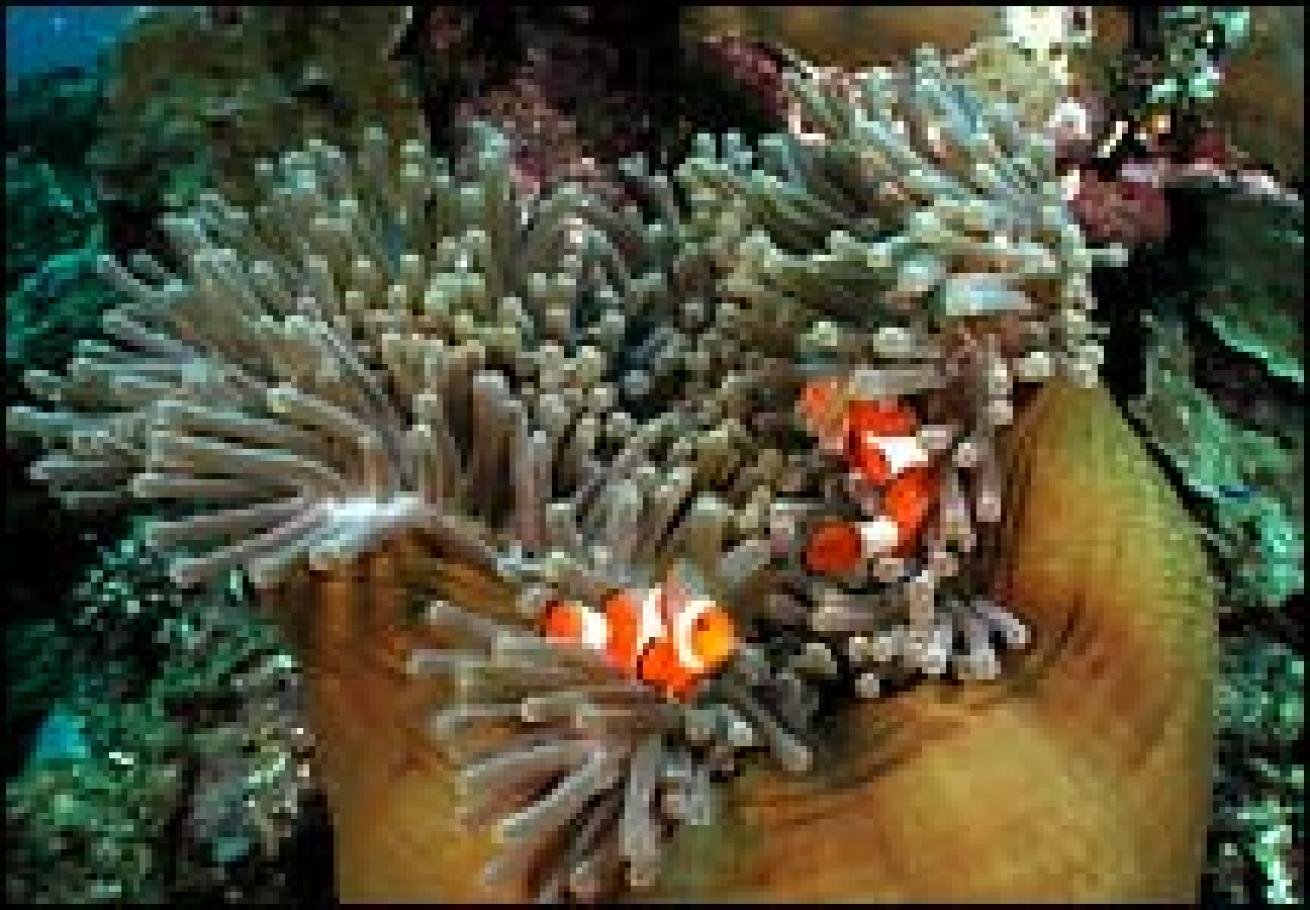
Once we hit Singapore we are surprised to find a local television reporter and cameraman wanting to interview us as we leave the airplane. They are seeking impressions from Americans regarding the World Trade Center terrorist attack, but this is the first we'd heard of it. The mood of the trip quickly goes from a combination of anticipation and fatigue to incredulity and depression. Yet, we're on the road, we can't fly home if we wanted to, so we power on to our host hotel, the Hotel Santika Manado.
This first afternoon at the resort is reserved for briefings from the hotel staff and the dive operation, Thalassa Diving Center. We receive our tokens for entrance to the Bunaken National Marine Park, and try to remain alert for the formalities. Gratefully, everyone is sensitive to our narcolepsy, and this long day of travel mercifully ends early.
Day 1
We awake to a beautifully sunny day and have an opportunity to appreciate the lush grounds of Hotel Sintaka Manado. The meals are buffet style, so no valuable dive time is lost waiting for food service. By 8:00 we are all assembled at the dive dock, with cameras and dive gear prepped and ready for our first dives.
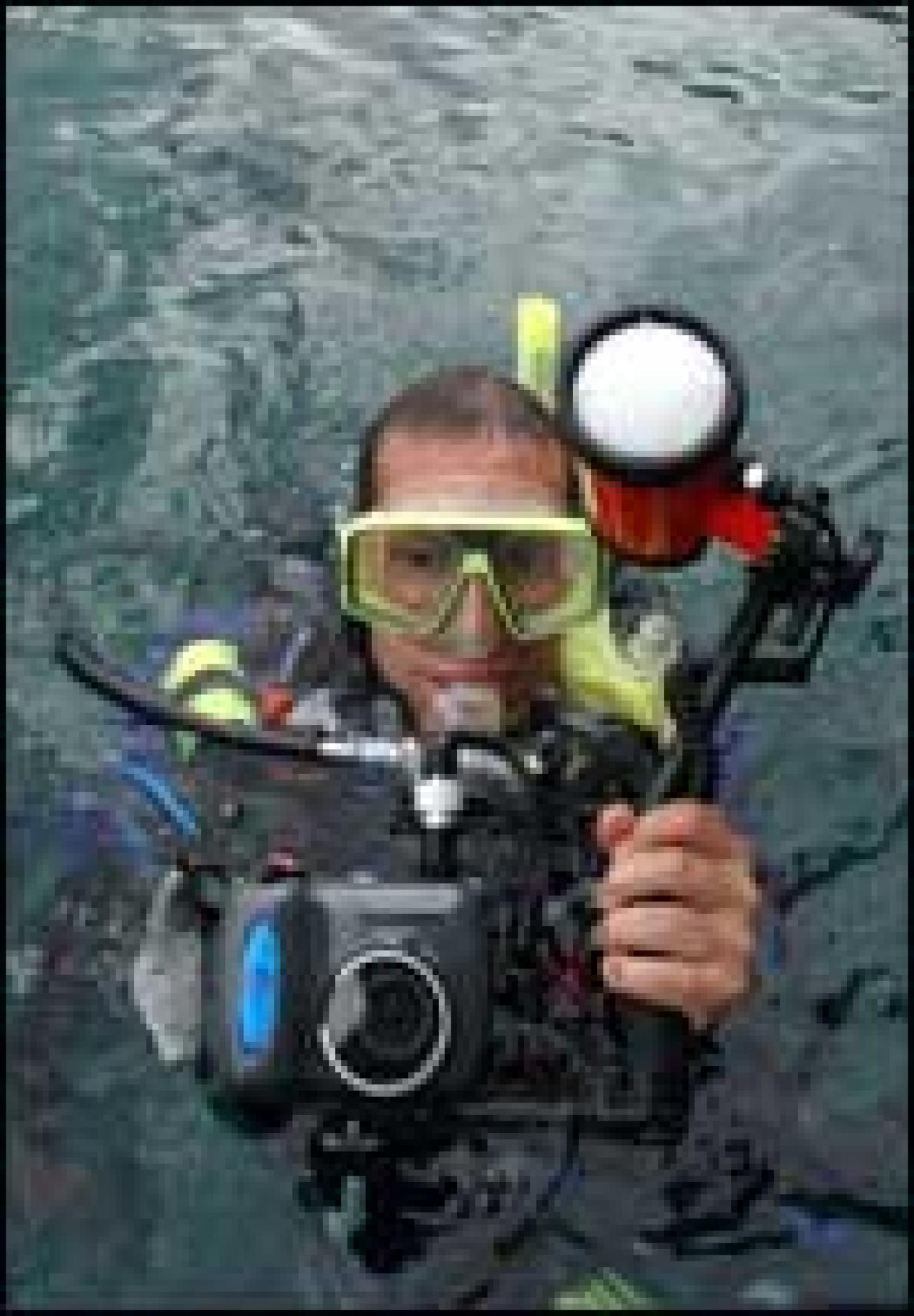
Geography 101--The Santika Manado is located pretty much in the center of the coastal region of the Bunaken National Park in the province of North Sulawesi, Indonesia. There is a northern section with 5 islands, and a central and southern section comprised of coastal reefs. The Park is quite large, 80,000 hectares, and diverse. There is an inactive volcano (Manado Tua), as well as other islands presumably of volcanic origin. Depths range from coral reefs nearly to the surface to a maximum depth of 2,000 meters. Water temperature is between 27 and 29 degrees Celsius year-round and waves rarely exceed 1 meter high. However, the tidal shift is 2.6 meters, so current is inevitable. Most dives are done as drift dives. There are 58 different coral species and 2,000 species of fish found within the Park.
The Dives--The waters are slick calm this day, but because it is our first day we decide not to venture too far from the resort. We take a 15-minute boat ride along the coast of North Sulawesi to DJ Point for our first dive. The water was very warm, 84 degrees, and since many of the Shootout guests are from Northern California and Colorado, the warm water is a very welcome change from what they had been used to. Visibility was about 60 feet, but our bright sunshine soon changed to gloomy overcast. No surprise that rain is part of the meteorological expectation simply by looking at the verdant hillsides. 3,000mm annual precipitation is expected, and we get our share today.
I'm set up for wide angle, so it makes my quest a bit more challenging, but many of the shooters are rigged for macro, and the low ambient light affects them not at all. The guides are extraordinary critter finders, mostly small creatures appropriate for an extension tube or housed macro lens, so tomorrow I'll opt for the macro lens on my Tetra housing, and a 105mm on my F100/Seacam combo. (Yes, film shooters are allowed, and in fact encouraged to join the Digital Shootout, but the lectures, events, and friendly competition are primarily geared towards digital techniques.)
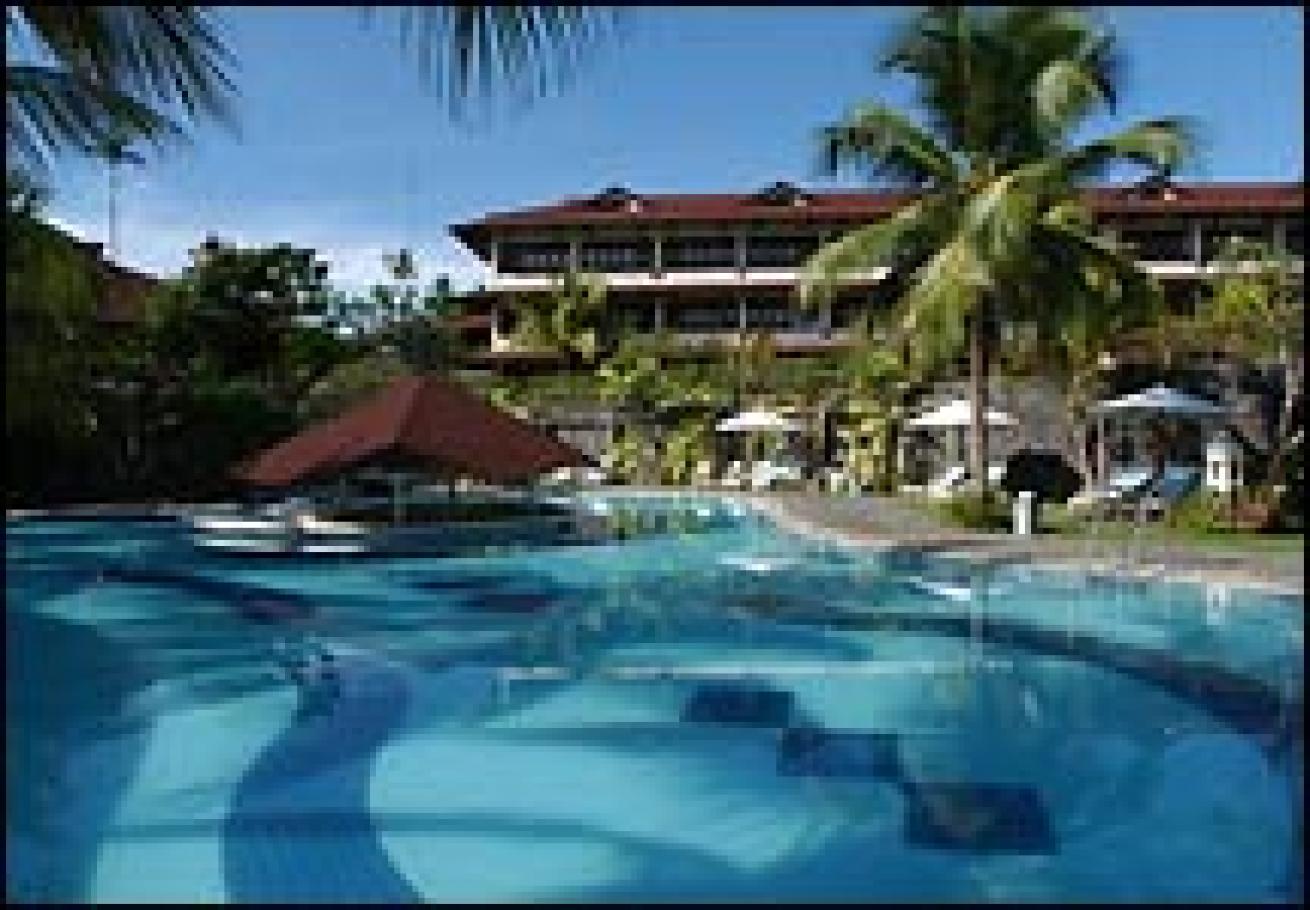
Everyone comes up from this dive pretty excited about what they'd seen--crocodilefish, clownfish, scorpionfish, and all manner of exotic little crabs and shrimp. Actually the hard corals in the shallows were pristine and inspiring, certainly deserving of wide-angle coverage, but despite the gentle current here no real massive filter feeders. I'm told the soft corals are more likely to be found amid the northern islands.
The second dive is to Tanjang Pisok. Like DJ Point this reef provides an excellent hard coral plateau from 5 to 25 feet, and then a mini-wall drops to about 120 feet before sloping off to the abyss. We didn't find big schools of fish, and the smaller reef dwellers were a bit skittish, but the macro potential was extraordinary. I think it was extraordinary anyway. I saw the two guides always pointing something of interest to the guests, and lots of strobes firing. But since I brought wide-angle this day I could not share their vision. One of the very cool things about the Tetra housing is that you can change ports to accommodate either wide-angle or macro, but not if you leave it back in your hotel room. Lesson #1 for Indonesia ?e photographically prepared for whatever might lie below, but figure there's a good chance it will be small and fascinating.

The Seminars--After lunch we have the first of our formal instruction session. Just walking in the conference center I realize that the organizers of the Digital Shootout have gone all out. There are covered tables with drinking water, electrical outlets for our laptops, and a computer projection system to facilitate the lectures. This day Berkley welcomes us again, and outlines the daily schedule of dives and lectures. Typically 2 dives in the morning, afternoon workshops and download session, and evening presentations. Much of the Adobe Photoshop seminar work will be done in the afternoon, the logic being our attention span will wane in the evening and technical minutia hard to absorb. This afternoon's lecture is by Dan Baldocchi of Light and Motion, and involves a very cogent and entertaining explanation of the myriad features and controls of the Olympus 3040 camera, and the corresponding controls and functions of the Tetra housing. Despite having had a dozen dives with the Tetra housing already, I learned a lot about both the camera and the housing by attending this lecture.
Our evening presentation tonight is by Berkley White and me, both talking about underwater photography in general. Berkley has more experience than I with the Tetra housing and is able to offer some pretty interesting shortcuts to effectively using the housing in the real world. My lectures have evolved from my experience shooting film, modified to encompass the new challenges and opportunities of digital. Gratefully the audience is enthused, and maybe even a little over their jet lag by now. At least no one slept through my slide show as I half expected.
Day 2

Carol Herrlie
Yesterday's overcast conditions are now past, and we awake to a gorgeous day over the Bunaken National Park. The level of alertness at breakfast seems pretty high this morning, so most everyone seems to be coping well with their jet lag. As is our routine each day, we split off into four different groups, all on a different boat for an 8:00 a.m. departure. Well, maybe a little past 8:00 a.m., for while the dive shop is quite efficient, there is still an Indonesian phenomena known as "rubber time". In our hemisphere we call it "island time", but by whatever name, the delays are minimal and we are soon on the day's first dive.
The Dives--Yesterday's dive to DJ Point was very productive, and several of us seek to repeat to try a few different lenses. For me, I shot wide angle here yesterday, and now revisiting with a housed 105 macro lens and the macro optic on the Tetra makes it a whole new dive. I still found myself shooting clownfish now and again, but I tried to discipline myself to concentrate on the wealth of more unusual subjects here. Things like tiny shrimp on bubble coral, decorator crabs amid the soft corals, and ghost pipefish. Once again, the divemasters are very helpful in terms of pointing out subjects, but they are neither disruptive or disrespectful of the marine life. My 36 shots on m film camera went all too quickly, and I came to appreciate the digital advantage of more exposures per dive, especially when card capacity is combined with judicious use of the delete button down below.The visibility off North Sulawesi isn't great today, probably owing to yesterday's rain, so we decide to head a little offshore to Bunaken Island to better facilitate wide angle. The visibility was probably in the 80-foot range, and the wall decoration nice. But the current was pretty swift; making stopping to take pictures a little challenging. I think most of us were shooting fly-bys, but I did manage to hide in the lee of the current long enough to grab some nice images of anthias amid red gorgonia. I found a very cooperative pufferfish, and several different hawkfish perched on colorful sponge.
Good progress is being made with the underwater imagery captured by our Digital Shootout participants. In fact, beginning with this post all of the underwater images are being contributed by our shooters with their Olympus cameras and Tetra housings. Please note the photo credit below each image.
The Seminar--This event is very fortunate to have Julieanne Kost and Daniel Brown join us. Both are evangelists for the Adobe Corporation, and are tasked this week with teaching us the benefits and intricacies of Adobe Photoshop. During the day they are learning to dive, during the night we are learning a little about the amazing software that has transformed the imaging and graphics industries. I think we are all enjoying the other's world immensely.
Julieane led off today with an introduction to Photoshop. Now all the buzzwords I've heard my art director's speak of over the years--things like histograms and layers and crop tools--are all more logical and evident now. We could all see the dramatic improvements that judicious application of Photoshop tools could make to digital images. It was a pretty intense 3-hour session this afternoon, but WAY valuable for a Photoshop novice like myself. Clearly there is more to learn about this powerful graphics tool, and I look forward to other insights from Julianne and Daniel later in the week.
Berkley and I handle the evening lecture tonight with principles of underwater photography in general. Digital or film, most of the same principles of underwater imaging apply. If you can take underwater photos on film you can easily shoot them on pixels. But a lousy photo is still lousy no matter what the media. It is our job to shorten the learning curve.
More Photos From Day 2


Photo by Stephen Frink| Photo by Craig Rodriguez
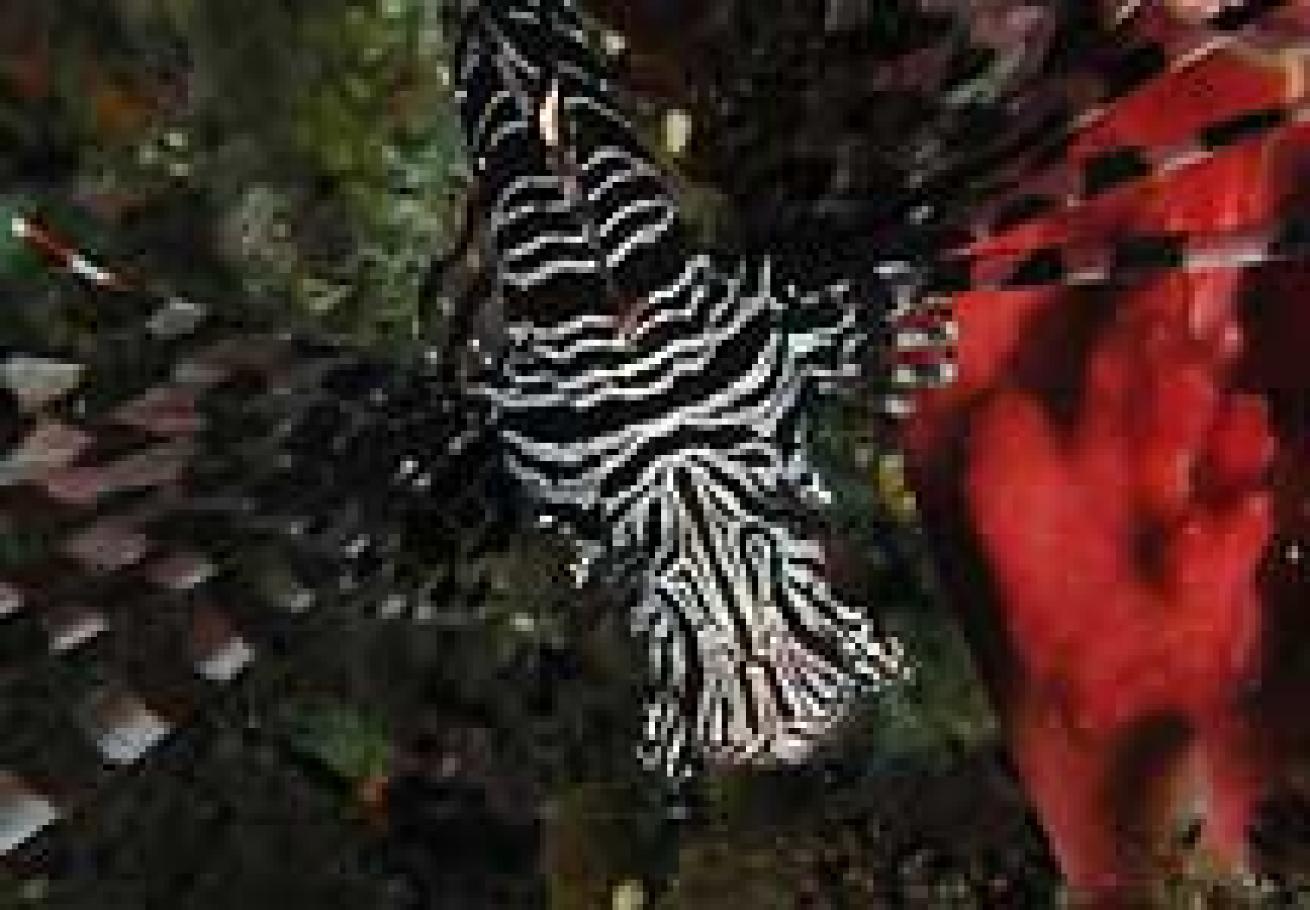

Photo by Laura Losito| Photo by Lynda Hanshaw
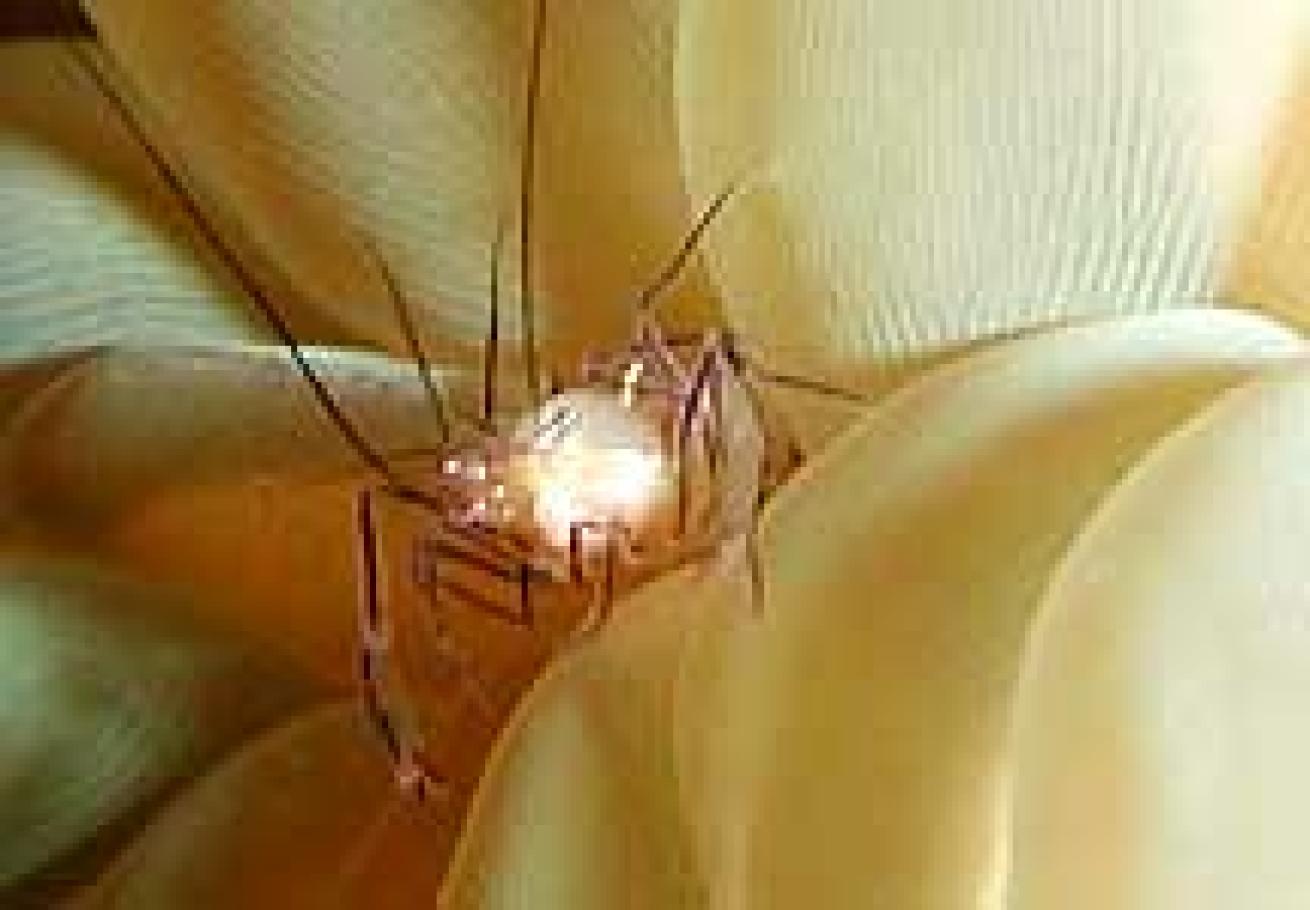

Photo by Terry Schuler| Photo by Stephen Frink|
Pictures From Day 3
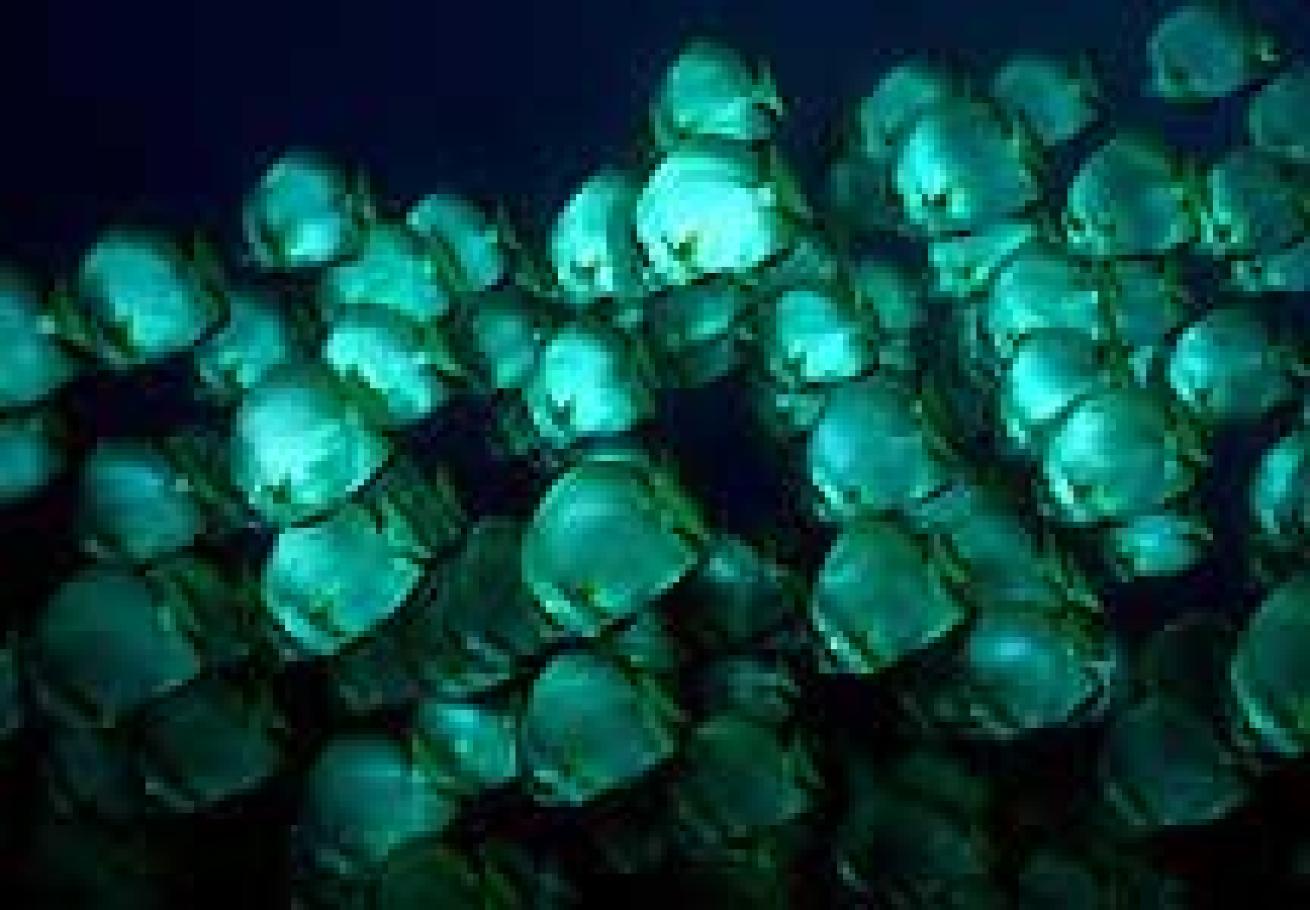

Photo by Laura Losito| Photo by Lynda Hanshaw|
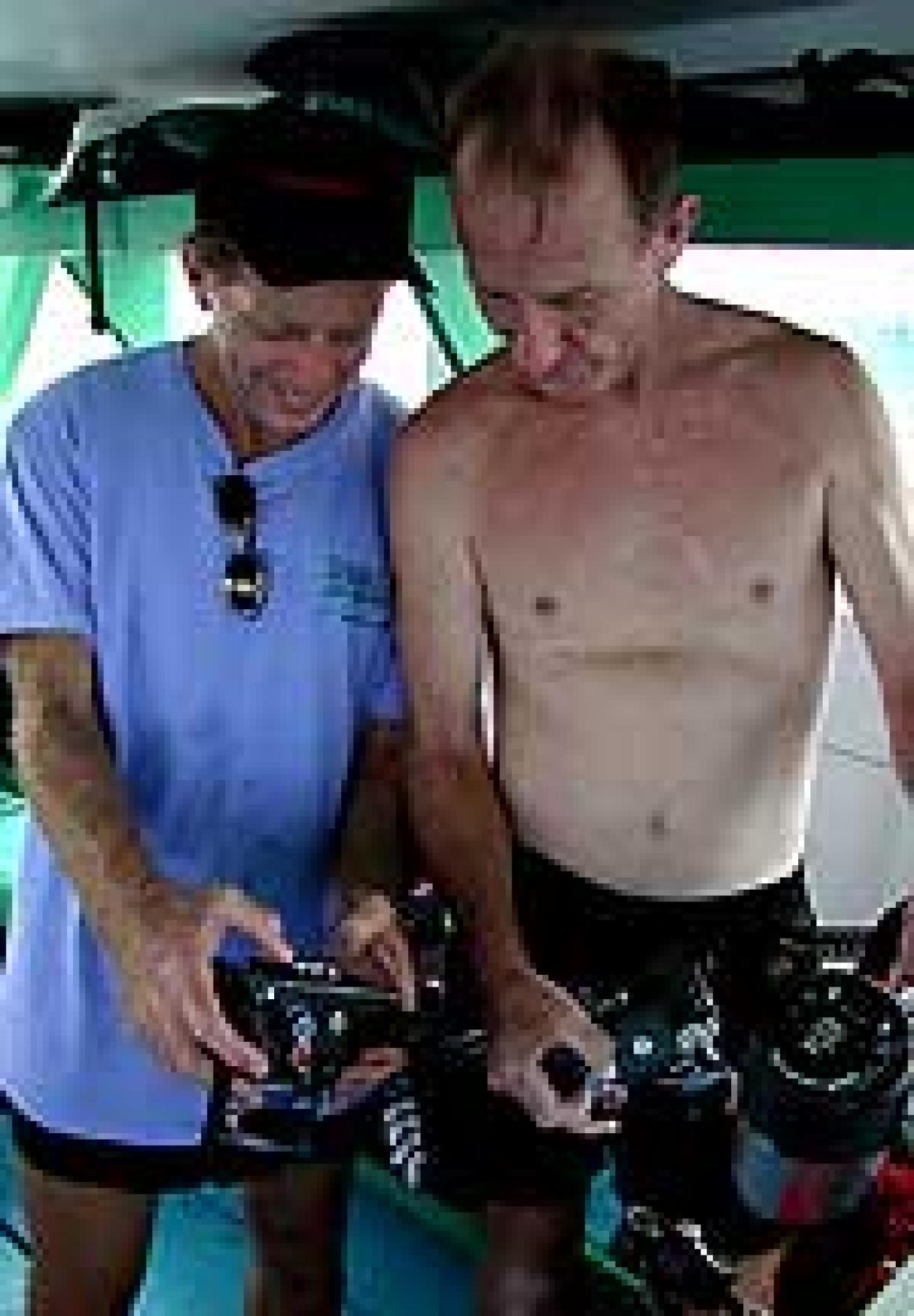
Day 4

| | Photo by Jim Biasella| Telephone communication is difficult here, and in fact in order for us to transmit this live digital diary we've had to impose on Simone Gerritsen of Thalassa Dive Center to upload the files via her cell phone at just 9600 baud. Before we realized we had to break these files down into smaller chunks for e-mail, we'd be online for an hour and a half before the system would shut down with a bad case of data overload. That meant that files we thought we sent on day #2 didn't actually get sent until day #3, but now we think we've got a pretty good handle on this remote outpost of cyber world.
However, some things are more than a little surreal here this week. While we head out daily to experience terrific dive opportunities, and while we enjoy the chance to learn more about digital image capture and Adobe Photoshop, one of the few English language television channels we receive here is full of details of the carnage and tragedy from the terrorist attacks. We all have families and business interests back home that we should be taking care of, but the reality is that we all flew here on foreign flag airlines, and we can't go home now even if we wanted to. I feel a little weird talking about enjoying a dive holiday while so much so wrong is happening back home. And maybe a little guilty too.

| | Photo by Terry Schuller| We awake this day to more bright sunshine and calm seas. Which inspires a few of us to launch a field trip. Most dives are conducted within 15 minutes of the resort, but they told us on the first day that two special excursions are available here. One is to the Northern Islands, about 50 minutes by boat, and the second one is about 90 minutes each way to the Lembeh Straits. The Northern Islands are notable for the rich concentrations of soft corals and other filter feeders, while the black coral sands off Lembeh are world famous for the unusual macro critters found there. I guess I should have looked at a map before I came, but I really had no idea that such world famous and diverse dive areas were accessible on either side of North Sulawesi.
The speedboats ride pretty nicely and we make good time on the run to Bengka Island. Most of the way is in the lee of the main island, so the seas are very calm. Only the last 10 minutes is in a 1 to 2 foot chop, so no problem. However, the vis is pretty murky this day. We can see it is a bit green, and once we drop below the surface see a fair bit of detritus in the water. I'd say we have about 30-foot visibility on our first site, Sahaung Point, and maybe 60 feet on the second dive to Machico.

Photo by Dana Weber
The Dives--Despite the turbidity, or perhaps because of it, the sheer concentrations of soft corals here is quite amazing. The current is mild, and the rock faces absolutely cloaked in yellow soft corals and brilliant red gorgonia. The ledges are dotted with yellow cup corals, and myriad small fish dart about. With the profusion of nudibranch, hawkfish, anthias, clownfish and other small reef dwellers, it becomes a difficult decision whether to rig for wide-angle or macro here. Of course, since I always dive with multiple cameras, the solution was to shoot both. Actually, the Tetra offered a pretty good solution for this dilemma as well. The new Light and Motion Wet-Mate ultrawide angle gave me a wide angle coverage of about 95 degrees with the zoom set at wide, but when the telephoto is engaged, extraordinary close-up capability as well. As an experiment I shot a reef scenic with a clownfish and anemone from about 2 feet away, and then using only the zoom control (same F-stop, same distance) I was able to compose a tight fish portrait. Really a pretty amazing optic in terms of its versatility and resolution.
On Machico most of the group opts for close-up and macro, concentrating on blue ribbon eels, butterflyfish, nudibranchs and the like. But I am feeling a bit of wide-angle deprivation here lately so I take my 14mm and the 9" dome to go into the shallows near shore to shoot some over-unders. Here is a beautiful white sand beach strewn with driftwood, and verdant hillside punctuated by palm trees, and pristine hard corals rising to within inches of the surface. If I don't get some world-class over-unders here I'm going to turn in my shooter badge. Actually, I've seen good coral concentrations in the shallows near shore on several of the islands, so I'm sure this is a discipline I'll revisit as time and weather conditions allow.
The Seminar--Today Julieanne leads us through some more of the intricacies of Photoshop. We review some of the levels and lasso controls we learned yesterday, and then leap into issues like unsharp masks and sizing images for printing. They brought a couple of Epson 1270 printers for the group, along with plenty of paper and ink. So, the Digital Shooters now have had a chance to output their images to decorator prints. Not only will they learn a great deal this week, but will travel home with some lovely souvenirs as well.
More Photos From Day 4


| | Photo by Craig Rodriguez| Photo by Stephen Frink|
|| |---|
|
| | Photo by Okie LoPresti| {mospagebreak}
Day 5

| | Photo by Chuck Bormann| _Tech Note: There are of course two ways a photograph can become a digital file. It could be shot on film (either print or slide film) and scanned, or it can be captured digitally. I should mention that all the images posted in this presentation are digital captures. There is no E-6 or C-41 film processing nearby so the only way we could make deadline for our daily upload of words and photos is by shooting digital cameras. I shot the topside images with a Nikon D1X and the underwater images are all taken with Olympus cameras (either 3040 or 4040 models) in Light and Motion Tetra housings. Except for the first day's photos, which were mine, the underwater images you'll see posted here are by our Shootout participants.
Last night, like the two previous nights, we have been looking at projected digital images from the Shootout participants. The staff photo pros have been offering insights into what works and what/how photos might be improved. This has been a very educational exercise for us all. There is the immediacy of review--no one has to wait for the film to be processed, mounted, and edited--as well as the camaraderie of being part of a new discipline._

Photo by Dave Hosley
There are no secrets here. Everyone gets to see what the other shot (after judicious deletes of course), and I think my wide-angle images from yesterday's trip to Sahaung Point has inspired folks to opt for the trek north. In the vicinity of the Hotel Santika Manado there is excellent small reef creatures and macro life, but pelagic encounters or colorful wide vistas are scarce. For those photo-ops, north is the answer. Unfortunately there is only the one speedboat able to make the trip quick enough for us to stay on our schedule of daily lectures, and those eight spots go quickly. I'll try north again tomorrow, but for today I'm happy to stay around Sulawesi and Bunaken Islands to concentrate on marine life and some more over-unders.
Speaking of over/unders, I wish I could post some of those here on the web, but like I said we don't have access to E-6 processing or a scanner, and I have to shoot these on film. The Tetra housing doesn't allow that particular photographic execution, so I have to use my housed F100 with a superwide dome port. Nor will the Tetra do extreme macro in the life-size or greater range (1:1 to 2:1). But from a magnification ratio of about half-life-size (1:2) through wide-angle coverage equivalent to a 20mm on a topside camera, it handles most everything else.
The first dive today is near Tanjung Pisok. We visited this vicinity the first day, but it represents a long sloping reef with dozens of distinct dives. Today we chose a totally different area, but in reality, it wouldn't matter too much if we dived the same spots repeatedly. Our objective is photography and there is always something new and different to shoot, or a new and different way to shoot a subject photographed previously. Yet, this is my first trip to Indonesia, so I am happy to experience variety as well. Its good we have 9 dive days for this event, for it is a long way to go for less.

Photo by Laura Losito
|
Almost immediately after dropping off the boat into the shallow reef plateau I spotted a small group of razorfish. It was comical to watch the way they moved about the reef, always vertical, always about 3 feet away from me. I had the wide-angle port on my Tetra but was having a hard time filling the frame. But one of the tricks I've learned to use this week is the zoom control. So, instead of using Zen-like skills to outsmart the fish and get close, I used the zoom to improve the composition. It worked great for these fish because I stayed at that magic 3-foot distance, but one of the things we observed in last night's projection critique is that shooters who used the telephoto control from five feet and beyond were getting very flat pictures. Whether digital or film, excessive water between the lens and the subject is trouble. The old rule--get close, and when you think you are close enough, get closer still applies. Zooms, custom optics, and Photoshop all help, but the reality is that water is 600 times denser than air and is a cyan filter factor as well. Water sucks both light and color from an underwater photo and our forever task is to defeat the physics.
This is one of those good/bad dives. Good because every ten feet I move along the reef I find something cool to photograph. Bad because I quickly finish the 36 shots in my film camera. Fortunately the Olympus has plenty more. This day I'm using a 128 mg card so I have more than 50 shot saved at Super High Quality (SHQ).
One of the nice things about the Digital Shootout is that there is time to try new things. In the lectures Berkley and Dan suggest shooting and HQ (High Quality) or SHQ, but there is a higher resolution mode called TIFF. Like Tim "the Toolman" Taylor I figure I want more power. So if SHQ is good, TIFF has to be better. Wrong! I tried some imaging in TIFF and found it would take the photo like always, but writing to the file took 30 seconds. Which may not seem too long unless you are sitting on the bottom waiting to take the next shot. Plus, when you want to review your image, it takes another 30 seconds to pull up on the LCD screen. I decided this mode is totally unusable for an underwater shooter. Maybe fine for a studio photographer working still lifes, and maybe even fine for wide-angle work with a skilled model able to hold position, but no way for marine life photography.

| Photo by Terry Schuller|
|
The second dive was to Likuan II, one of several wall dives along Bunaken Island. Here there is a broad, very shallow reef plateau, so several of us pull out our housed Nikons to shoot some over/unders in the mid-day light. Then we change back to our fish lenses and Tetras to work along the vertical drop. I found lots of pyramid butterflyfish at cleaning stations along the wall, so a fish that normally is pretty elusive was far easier to approach. Other successes this dive included a pufferfish, coral grouper, and one of my personal favorite reef fish, the regal angelfish. After lunch we go back to the conference center to work on downloading our images from our Olympus cameras to our computers. The Photoshop seminar is tonight, so we have a bit of time to organize our jpegs that have survived the edits this week.
Professional underwater photographer Jim Watt arrived to join the Digital Shootout today too. We get a chance to catch up on each other's travels over the past few months, and I discover he has actually been in Indonesia nearly a month now accumulating lots of new film and digital files to share with us. Jim is one of the underwater pros who first embraced the power of digital and is quite knowledgeable about not only digital image capture, but scanning from film and digital file management. What to do with these digital files once captured and refined them with Photoshop is a huge concern for me. I managed to get away from leaving my slides in little yellow boxes by having a system of aggressive edits from the very start of my career. Now that I'm beginning to capture digital images I know I have be equally (or hopefully better) organized before the archive gets unwieldy and intimidating. His lectures later in the week will be quite illuminating no doubt.
Day 6

| | Photo by Dan Baldocchi|
_Dear Stephen,
Am enjoying the articles on the Rodale's website - thanks. Read your one from the Digital meeting -- are there camera bodies on the digital horizon that we'll be able to use all of our expensive lenses with or will we now have to buy these too as everyone converts to digital? Thanks. Hope you have a great time in Indonesia. We are leaving for a few weeks to Palau / Yap and Moorea -- hopefully good weather. Take care.
Kirk_
Dear Kirk - Not having a crystal ball, let me share what I know for sure. In order to take a digital photograph underwater, you'll need a housing. If you want to use your existing lenses, one possibility is to house a digital single lens reflex. Cameras like the Nikon D1X and Canon D30 are examples of cameras suitable for this application. You should be aware however that with the 1.5 magnification of the existing digital chips, the focal length you use topside would not directly translate for underwater. For example, your superwide 14mm will be a 21mm equivalent, or about the same as a 15mm on a Nikonos when using the 14mm behind a dome port. Still, you'll have SLR and can use lenses you might already own.

| Photo by David Bowes|
|
Light and Motion has executed a very clever solution to this dilemma with their Tetra housing. The Olympus 3030/3040/4040 does not have interchangeable lenses, but does have a zoom with a topside equivalent of 35-105mm. In order to allow for macro, fish, and wide-angle photography, they created three different port options. The standard port is perfect for close-up and fish portraits, the macro port can get as close as 1:1 (Note that in yesterday's post I said I thought the magnification could only go as near as 1:2. Last night I saw a digital file of a clownfish portrait that had to be 1:1 shot with the macro port and full telephoto extension. I stand corrected), and the wide-angle port is probably about equivalent to a 24mm lens topside.
In addition, they are just now offering a combination wide-angle/macro optic. This involves a separate standard port with a thread fitting. When this is installed in the housing, the shooter can use either a wide supplementary lens (about 95 degrees), or add a macro lens. This gives maximum versatility on any dive, for the range of subjects is from super-close to wide angle, simply by adding/subtracting supplementary lenses. When you consider that there is considerable crop potential within any single optic by zooming from wide to telephoto, the choices with that particular lens combo are pretty amazing. Actually, if a diver were to carry both supplementary lenses, the compositional diversity is beyond anything I know of presently in underwater imaging.

| Photo by Stephen Frink|
|
Each night we are having projection reviews of the day's shoot. I have to say I am very impressed with the images the group is generating now. They have all learned the tricks that make their Tetras work best, and are now familiar with the kinds of subjects they might find on these reefs. Their vision and execution is most excellent. Plus, the whole concept of no film processing, mounting, light table editing, and then projecting is very empowering. I'm afraid this is leading to a bit of a paradigm shift for me. I can see the time in the not-so-distant future that I'll be traveling to teach seminars with images loaded on my hard drive or a CD and then projected via my laptop and an LCD projector. Berkley had a terrific instructional slide show this week that he handled in this manner. One more tick on the digital side of the pixel versus film conundrum.
I should point out that one area where film continues to rule is in any wide-angle shot where the ball of sun is included. Those fine gradations from bright sun through turquoise through deep blue are just not possible with digital. The highlights blow out and no amount of Photoshop expertise can bring back detail that did not exist in capture. I suspect the time will very soon arrive where I'll be shooting critter shots on digital, but there will have to be some technology enhancements before I'll be personally satisfied with digital for extreme wide-angle.

| | Photo by Stephen Frink| The Dives--Each day Thalassa Dive Center makes their speedboat available for trips north to the Bengka Islands. Despite the 50-minute boat ride, as compared to 10 minutes for the local dives, there are some compelling reasons for the trip. Mostly in terms of soft coral concentrations. There is considerable flow of water along these exposed islands, which nourishes a rich filter feeder universe. Gorgonia, all hues of soft coral, crinoids, and large sea fans adorn the rock faces here. The bottom terrain kind of reminds me of the BVIs, but the decoration is Indo-Pacific to the max. Jim Watt told me that visibility is generally very good here in the Bengkas, but we are only getting about 50-60 feet this week for whatever reason. Still, with such rich foregrounds, we don't need much in the way of distant backgrounds.
Today's dives were Batu Gosok and Sahaung Point. At Batu Gosok the current was quite extreme. I could see a set-up I might want to photograph 10 yards away, but if that 10 yards was beyond the lee of the rocks I couldn't get there. So, I took the path of least resistance and moved from pinnacle to pinnacle and found plenty of subjects in areas of shelter. However, the real high spot of the day was back on Sahaung Point. The soft corals weren't as engorged as when I dived there 2 days ago for after a 2-hour surface interval the tidal current had dropped to almost nothing, but the marine life was awesome. I found a great school of opal sweepers flanked by saffron soft corals, a cooperative school of blue runner, and a scorpionfish amid tubastrea. My one disappointment was with a nice school of blue-line snapper that simply would not let me get close. Odd, because in places like Palau, the Maldives, and the Red Sea, of all the reef fish these were perhaps the easiest to approach. I guess these guys didn't get the memo.
The Seminar--Today's chat was more Photoshop with both Daniel and Julieanne contributing. They showed us elements of web design and using layers in Photoshop to make creative, and sometimes startling effects. They make it look so quick and easy, but of course I know that's the product of year's experience and considerable talent. Still, they showed us the potential of the software in skilled hands. Gratefully my wife Barbara is the Photoshop guru in our family and all I have to do is take the pictures. It helps to have this new familiarity with the program however, so at least now I can be somewhat conversant with her and my art directors when they throw Photoshop buzzwords at me as if I should know these things.
Day 7

| Photo by Stephen Frink|
|
Last night's presentation was by pro underwater photographer James Watt on digital file management. Jim has been very active in the stock photo business for many years and has learned to not only take good pictures, but also make them available to the marketplace. These days, the marketplace is digitally enabled. Clients want to be able to visit a web site, do a keyword search of an online database, save an image to an electronic lightbox, and execute a purchase. The days of pulling slides from 3-ring binders and sending analog copies (either originals or duplicates) to clients via Fed Ex are to a great extent past. Film may still be archived this way, but more often scans are made and burned to media, which may then be Fed Exed. Or more likely, the file will be saved according to the client's specific needs, and then transmitted online.
Shooting in the digital format saves the time and expense of the film intermediary step, but of course not all things are equal between the two media. This week we've seen things that digital does better than film, and areas where film clearly rules over digital. But the point of Jim's lecture was that it is never too early to start controlling your digital files in an organized archive. The time is now, while we are just beginning to accumulate digital files.

The program Jim finds most useful for digital file management is Extensis Portfolio. Jim showed us lovely examples from his own web site how typing keywords as a search parameter can pull up the specific images that relate. Obviously the keywording task is incredibly tedious and time consuming at the front end, but extremely efficient for photo research at the back-end. Other topics of interest this evening were saving images for web transmission, compression of large files for print media, and storage. Even just this week our hard drives are getting bogged down, so clearly there has to be some ongoing way to save the digital selects. Zip disks are fine for sending a few images, but aren't nearly commodious enough. CDs are an inexpensive solution, but with too many files consuming too many CDs, finding the right CD will eventually become a problem. At the pro end, DVD and additional hard drive or raid storage has to be the answer. Presumably DVD burners will come down in price soon, so that may end up being the solution. At least until the next solution comes along.
The Dives--The speedboat this day took the 1 hour cruise to Lembeh to experience to extraordinary creatures found in the dark volcanic sands offshore there. The Lembeh Straits is the location of Kungkungan Bay Resort, world renown for the excellence of their muck dives, and our guests came home suitably impressed with these weird and wonderful creatures.

| | Photo by Stephen Frink| Having seen some of the images they captured I regretted not going, but we had a very cool day here at Santika as well. Manado Tua is the scenic offshore volcanic island that I have been photographing so often at sunset, and the dive we chose there was Bualo. This was a vertical dropoff, pleasant but unremarkable in terms of what we captured this day. However, our enthusiasm immediately picked up when we moored at Fukui. The hard corals were beautifully pristine just below the surface and immediately Jim Watt and I began thinking "over/unders". Jim had no more made the wish for some locals in a dugout canoe for a topside element to our over/unders when a couple of cooperative boys came paddling by. With the help of an interpreter from our boat, the boys held position while we shot away. I was rigged with my Seacam 9" dome on my F100, but Jim was shooting his Tetra today. I had made the comment earlier that I didn't think the Tetra optics would be suitable for split shots, assuming instead that a large dome is necessary, but as the photo on today's upload demonstrates, Jim proved me wrong. Granted, it takes a slick calm day and excellent conditions to get the water interface exactly where it should be an a port with so small a diameter, but now we know for sure it can be done.
Once my film was spent, I gave it a try with my Tetra as well, and truthfully came up with some pretty interesting shots. Many had water droplets on the top part of the image though, so if I were to try this again I'd probably coat the port with Rain-X to make the water sheet off more quickly.

| | Photo by Berkley White| But then again there is the Photoshop option when necessary to clean them up. But now having seen the massive time blackhole Photoshop can become for the digitally obsessed, I am reminded once again how much better it is to shoot it right in the first place.
Day 8
This event is unfortunately winding down. We have just 2 days of diving left, and the Digital Shootout contestants have only this morning to shoot more pictures for their "best-of" submission. Actually, the week has been mostly about learning digital photography and Photoshop, as well as having some very good diving. But there is a competition element as well. There are three specific categories for which images may be submitted:
Wide-angle
Standard lens/macro
Photoshop Enhancements
For each category there are significant prizes, including Tetra housings by Light and Motion; Photoshop, Elements, and Premiere software courtesy of Adobe; wardrobe and international charging stations from Backscatter, and Ultralight?s unique new pivot tray for the Tetra. The judges will be Jim Watt, Daniel Brown, Julieanne Kost, Stephen Frink, and Berkley White as tiebreaker if necessary. (We have 113 images now submitted.)

| | Photo by Craig Rodriguez| After the morning dives we all retired to the conference room for a heavy editing session. The contestants could enter 2 images per category, and naturally they needed to know which 2. The Olympus Camedia software is a quick means of editing from the saved files, and since the competition required that the entries be in a "raw" (unenhanced or manipulated) mode, so it all went pretty quickly and smoothly.
Tonight will bring another presentation by Jim Watt on film versus digital comparisons and other digital issues, and our remaining schedule for tomorrow is for morning dives, a judging session, an afternoon introduction to Adobe Premiere, and our grand finale presentation tomorrow night.
Stay tuned to see the winning images in our final installment of this first annual Light and Motion Digital Shootout!{mospagebreak}
More Photos From Day 8

|
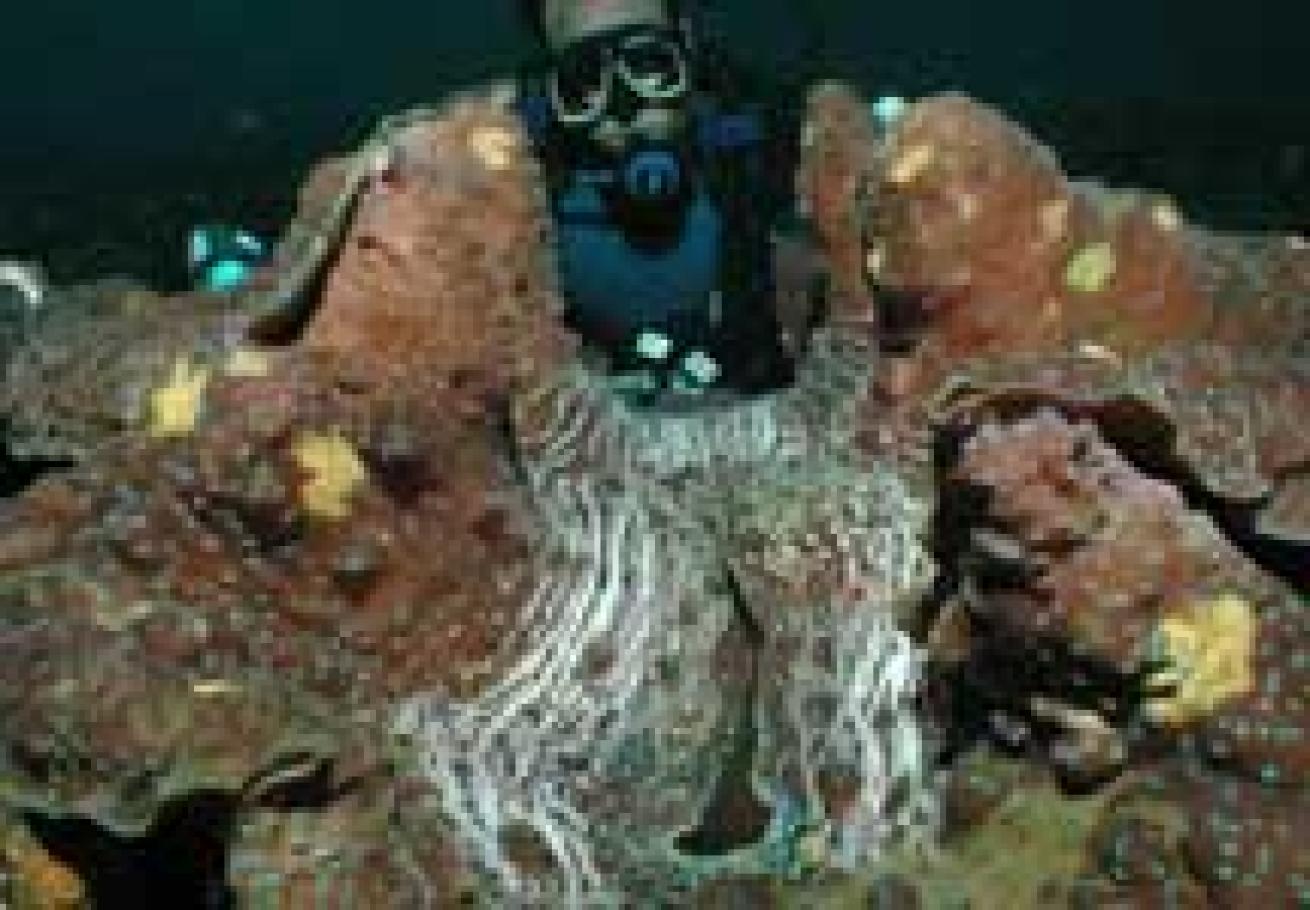
| | Photo by Berkley White| Photo by Ken Bailey|
||| |---|---|
|
|

| | Photo by Dan Baldocchi| Photo by Berkley White|
Day 9
And Here Are the Winning Entries in the First Annual Digital Shootout...
Sponsored by Light and Motion, Olympus, Rodale's Scuba Diving, Backscatter, Adobe, and Ultralight Control Systems.
Macro Winners
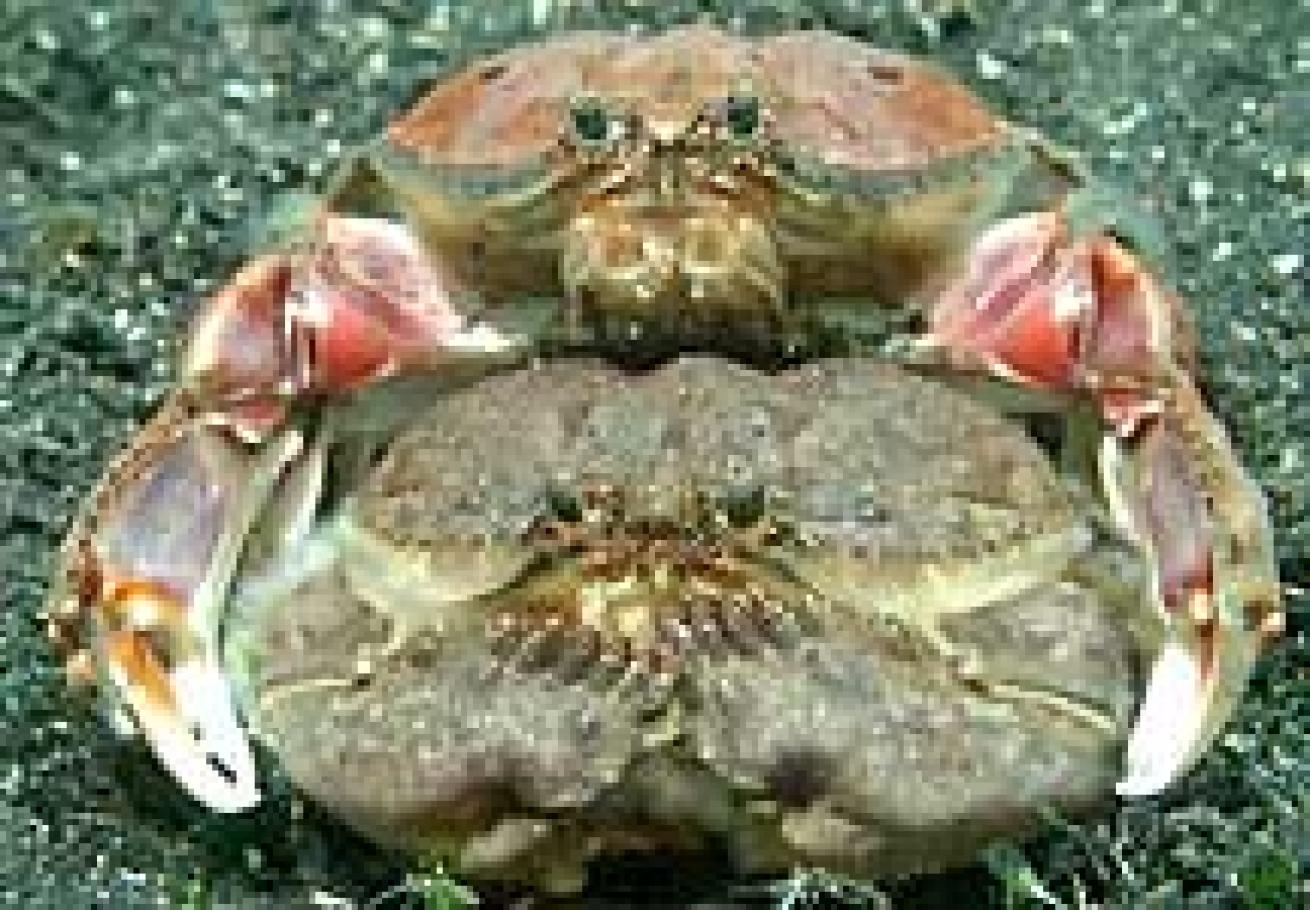
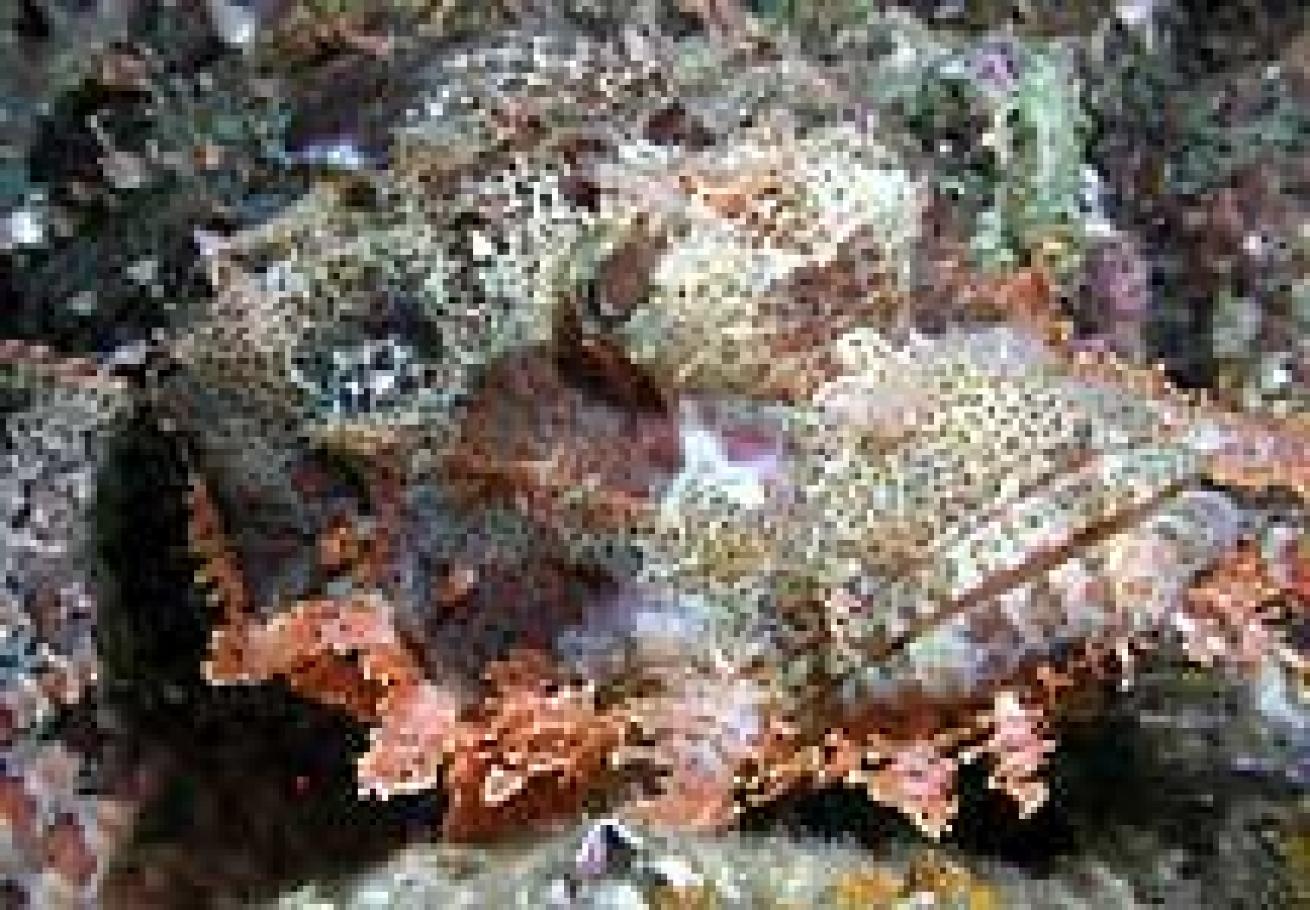

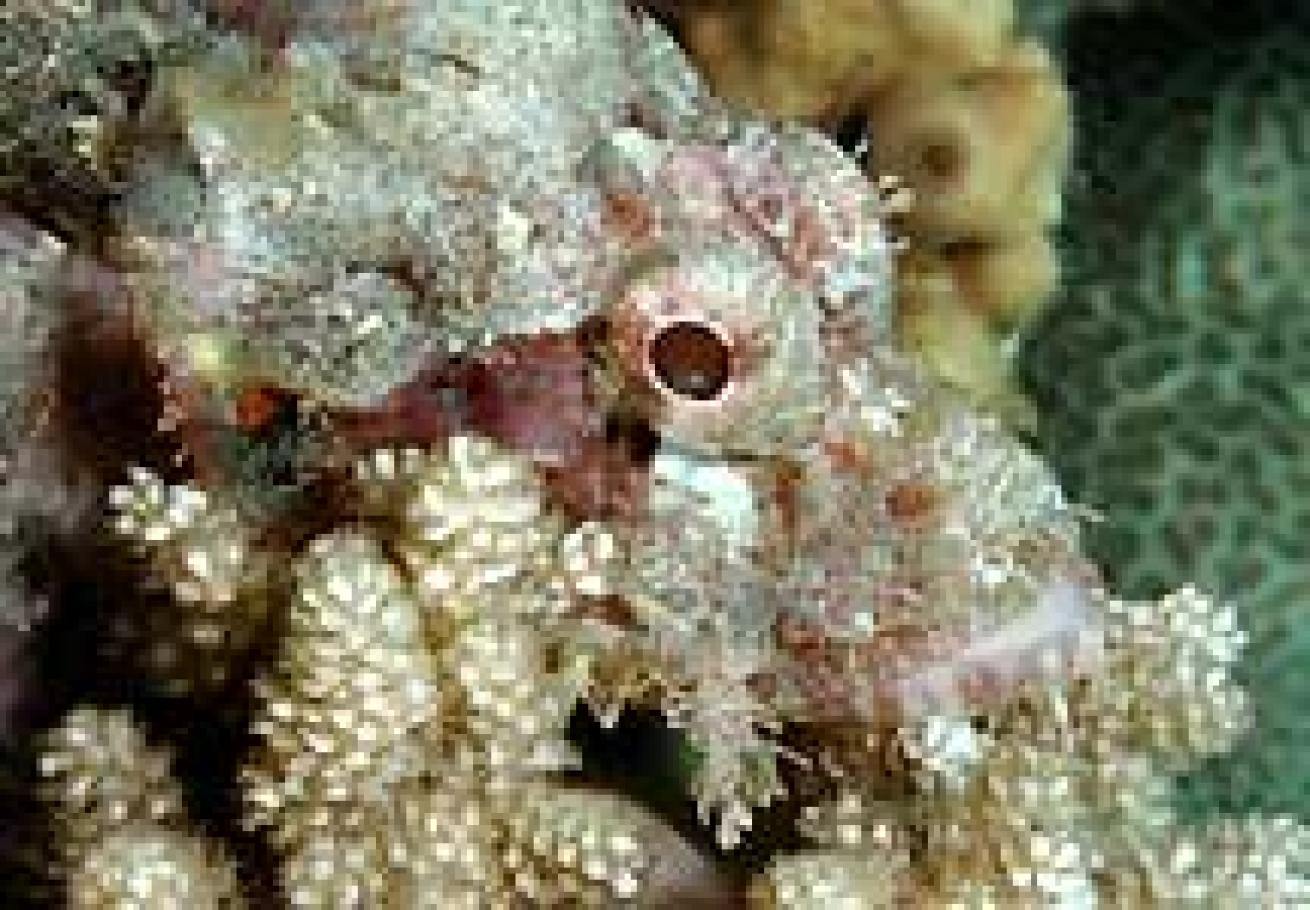

Photoshop Winners
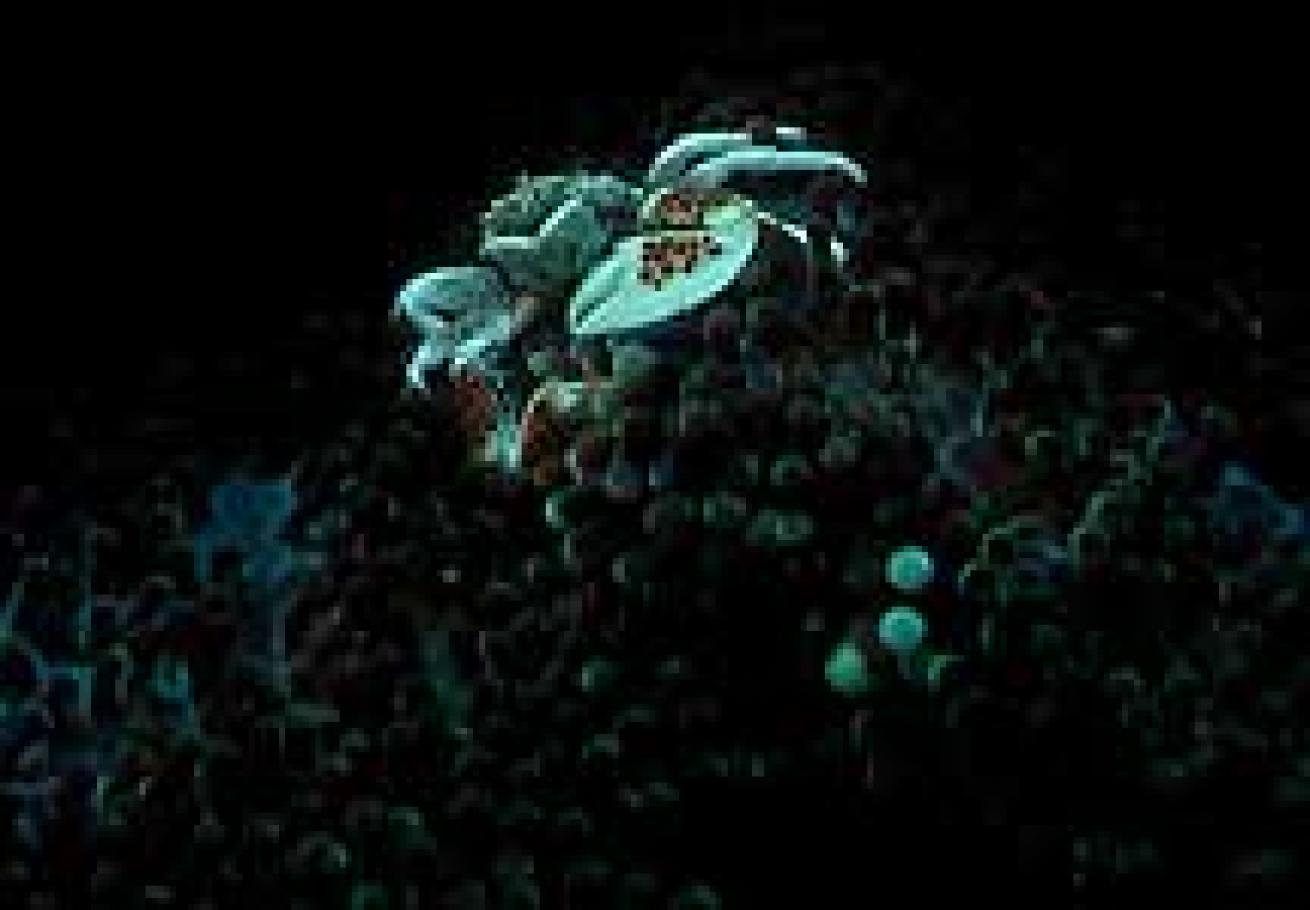
| | Photo by Dan Page|
|| |---|
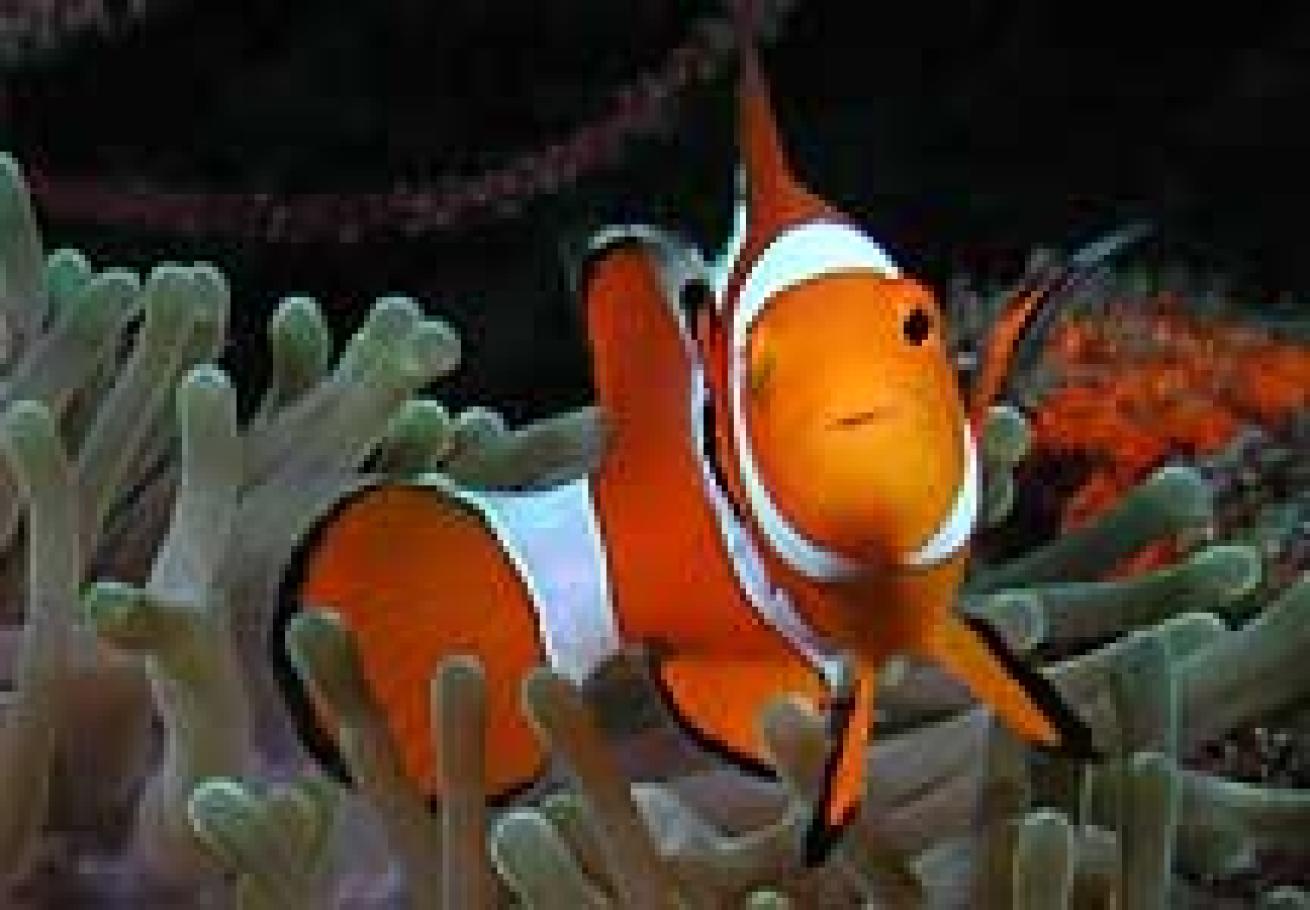
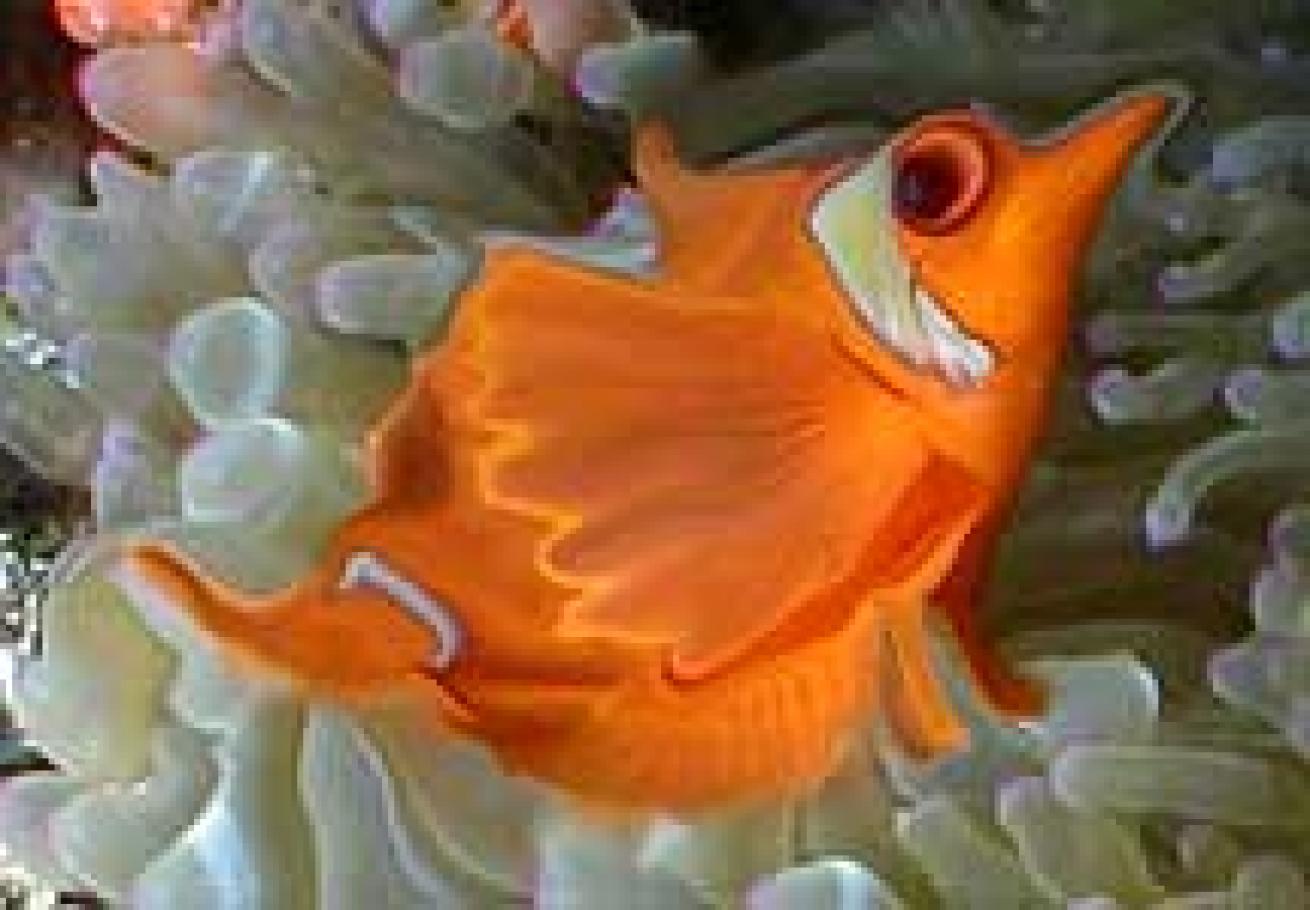
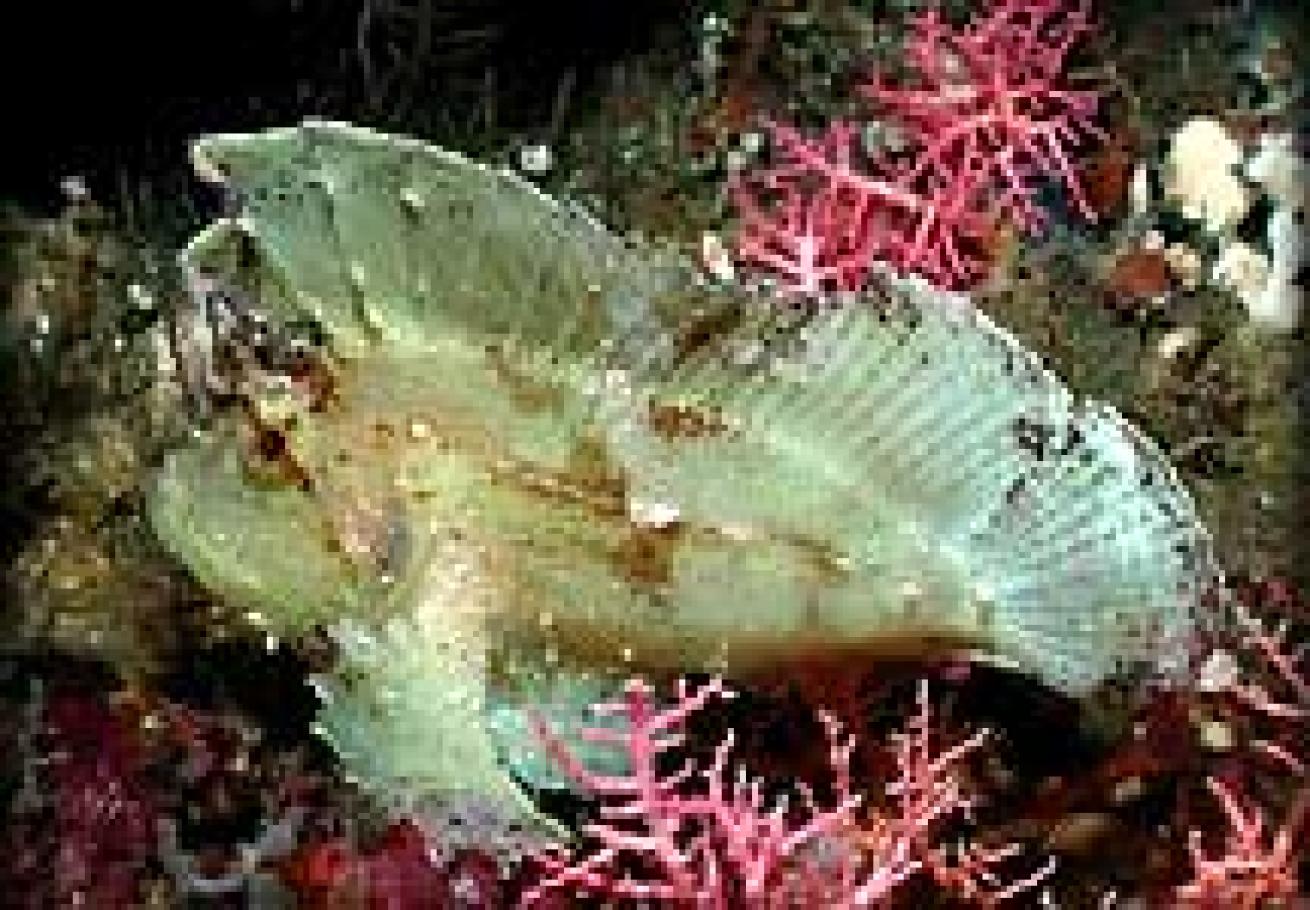
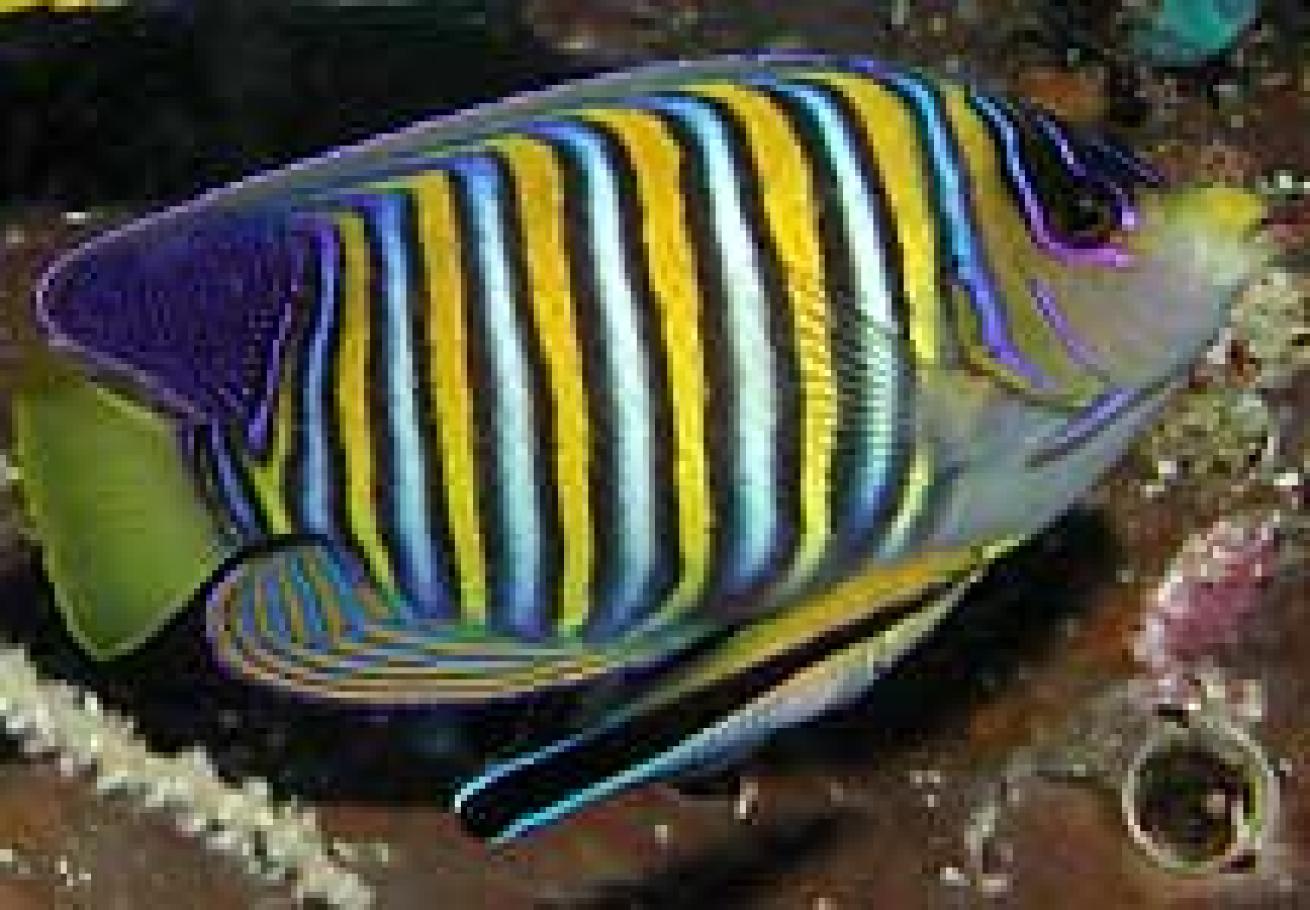
Wide-Angle Winners
